Flightline Safari
- 1 About Flightline at the Safari Park
- 3 Admission
- 4 Age Restrictions
- 6 Change / Cancel Policy
- 8 Frequency
- 9 Miscellaneous
- 11 Program Advisements (Mandatory)

About Flightline at the Safari Park
- Minimum 60 lbs
- Maximum 300 lbs
(Weight restrictions updated from 75-250 to 60-247 August 2014)
Soar above it all.
Flightline Safari is the ultimate recreational experience for those looking for excitement.
Secure and comfortable in your harness, you will soar as high as 130 feet above the ground with rhinos, giraffe, and more in the fields below you.
The Flightline experience includes the use of safety equipment, an orientation, a brief interpretive tour, and a flight on our two ziplines.
The first zipline is the Fledgling run.
It is approximately 400 feet long and carries you through fragrant, shady trees to prepare you for your final Flightline experience.
Once "fledged," you board a Flightline truck for a guided tour to the upper launch area of our main Flightline.
Upon arriving at the final launch platform, you will have breath taking views of the San Diego Zoo Safari Park and of the large animal enclosures below.
Your guide will once again hook your harness onto the Flightline "trolley" and you're ready to fly approxiamately 2/3 of a mile, landing safely near our campground at the Park's Kilima Point.
Flight Requirements:
- Minimum weight: 60 lbs / Maximum weight: 300 lbs (Each guest will be weighed on site.)
- Closed-toe, secure shoes required
- Guest must be able to comprehend and follow all safety instructions
- Guest must be able to fit within the safety harness
- Climb up and down a short vertical ladder and stairs
- Put on safety harness
- Hold arms above head for 2 minutes
- Hold legs apart for 2 minutes
- Hold and carry a 20 lb. trolley for several minutes
- Demonstrate all rider positions
- A Waiver must be signed by each guest prior to the tour
- We have the written script of the video safety briefing and visual signals for the flight positions
- Admission is NOT included in the price of the Flightline Safari and is required. Please ensure each guest has a valid Admission ticket or Membership.
Age Restrictions
- 8 years. No exceptions.
- 1 - 8 guests per program time.
Change / Cancel Policy
- Changes or cancellations are not permitted.
- 15 minutes prior to scheduled time
- Location: Safari Ticket Booth between signpost numbers 5 and 6, near Lorikeet Landing.
Miscellaneous
- Late guests will be admitted only up to 5 minutes past advertised tour time
- Re-rides may be purchased on site at a discounted price
- A nominal parking fee is paid upon arrival.
Program Advisements (Mandatory)
- The Safari Park reserves the right to cancel or modify Flightline due to inclement weather, animal health, and/or safety concerns. In the event of cancellation, efforts will be made to reschedule
- Adult to Child (ages 8 through 15): 1 Adult for every 3 Children (no exceptions)
- Ages 16 and 17: no accompanying adult required; cannot be chaperone for riders ages 8 - 15 years
Revised 12/24/18
Navigation menu
Personal tools.
- View source
- View history
- Recent changes
- Random page
- Help about MediaWiki
- What links here
- Related changes
- Special pages
- Printable version
- Permanent link
- Page information
- This page was last edited on 24 December 2018, at 13:18.
- Privacy policy
- Disclaimers
- Meeting Planners
- Meet the Team
- Services & Resources
- Service Providers
- Hotel & Venue Search
- Convention Center
- Travel Trade
- San Diego Specialist
- Trade Offers
- Request Images
- Hosting Assistance
- Press Releases

San Diego Zoo Safari Park
Jambo a safari adventure in san diego.
Welcome to the San Diego Zoo Safari Park, where life-changing moments happen daily. Set out on safari and discover 1,800 acres of sprawling savannas teeming with wildlife as well as world-class botanical gardens—there’s no place like it on Earth. Encounter rhinos, giraffes, wildebeest, and large herds of wildlife roaming together. Journey through bamboo forests and come face-to-face with Sumatran tigers. Hop alongside kangaroos and dive underwater to meet the only two platypuses outside of Australia. And experience the awe-inspiring giants of Elephant valley. When you’re here, you’ll discover adventure is in every moment. And a moment can change a lifetime.

Neighborhood: North Inland
15500 San Pasqual Valley Rd Escondido, CA 92027-9614
Contact Info
(619) 718-3000 Toll-Free: (800) 407-9534
Please check our website for current hours.
More To Know:
- Located 30 miles north of downtown San Diego - and well worth the trip!
- The San Diego Zoo Safari Park is open 365 days a year
- Plan a full day & bring walking shoes, sunscreen and water for your adventures
- Safaris do fill up; book online ahead of time to ensure your spot
- Lovely facilities for catered weddings, parties and other group events!
Special Events:
- Marvel at eagles, owls and an Andean condor at Frequent Flyers
- Visit the World Gardens to see amazing and rare plants
- Autumn Festival On The Weekends From 10/5 -10/27
- Kids Free month with free admission for kids 11 and younger during October
More Information
- Destination Weddings
- Historic Landmark
- General Admission - Adult
- General Admission - Child
- Parking (RV)
Sharing is caring
Like what you see? Share with your friends, family, and the world!
Stay in touch
Sign up to receive the latest news, events, and updates about San Diego. Our monthly and weekly newsletters will keep you informed about the latest and greatest happenings in the destination.

- Things to Do
- Downtown & Urban
- Inland Valley, Mountain & Desert
- Baja California
- Neighborhood Maps
- Getting Around
- Travel Guides & Apps
- Family Travel
- International Travelers
- Visitor Information & Services
- Hotels & Resorts
- Bed & Breakfasts
- Camping & RV Parks
- Vacation Rentals
- Other Accommodations
English | Change Language
Select your country or region
Or use google translate.
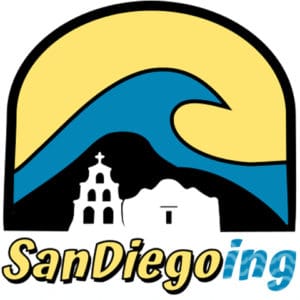
San Diego Zoo Safari Park – What You’ll Want to Do & See – 2024
How to do San Diego Safari Park from Africa Tram to zebras. Here’s a gorilla-sized tips guide to animal exhibits, shows & tours. A day planner’s included with animal encounters and entertainment events pre-loaded. You’ll know what you want to do, and when to do it to have a great day.
At San Diego Zoo Safari Park you can have an African Safari experience without going to Africa. Walk and see wild animals in large natural field enclosures and exhibits like Lion Camp. Enjoy activities like Africa Tram, Cheetah Run, overnight camping, ziplining, ballooning, playgrounds, and shows.
* Save with a secret promo code on each San Diego Zoo or Safari Park 1-Day Pass. Go any day. Go directly to the gate. Click HERE to get your code, instructions & discounted tickets by email. By clicking the link above you agree to receive an automated email message. Valid only at aRes Travel , San Diego’s local authorized ticket seller. Read my full privacy policy .
If you make purchases through the links in this post, I may be compensated. Read my Advertising Disclosure for more info. Thanks! ~ Nancy
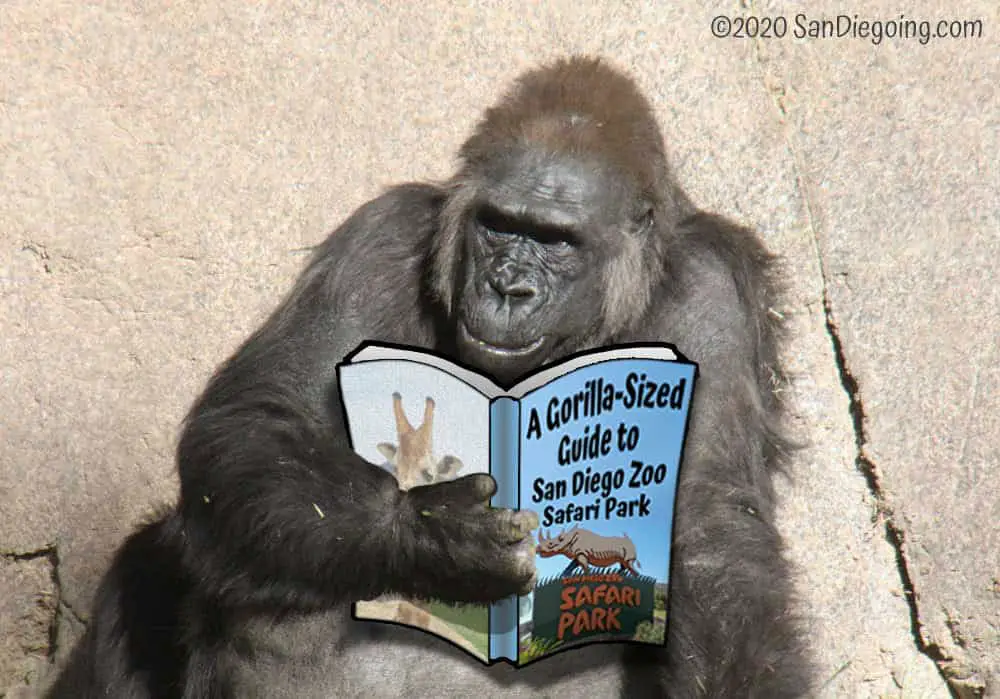
That’s the quick summarized version of what there is to do at Safari Park. But there’s a lot more to discover below. Also, check out my Safari Tours reviews to discover how much time each takes to make organizing your day easier.

What Can You Do At San Diego Zoo Safari Park?
At safari park you’ll walk…a lot .
You’ll be getting your steps in during your day at San Diego Safari Park. It was designed first as a breeding facility for rare and endangered species. Because of this, the animal exhibits have more room here than at a ‘normal’ zoo. And thus you’ll be strolling a bit further between them.
Safari Park is 1800 acres large. But the area that is open to general admission ticket holders is only about 80 acres ( Link to my page with the maps ). Still, that’s a lot of ground to cover.
If you have limited mobility there are wheelchairs and electric scooters for rent. There’s also an ADA (American With Disabilities Act) shuttle bus to get you around the park. Those who have difficulty with standing in line may request an “Easy Access” pass at the entrance to Safari Park. The pass offers you and 3 more members of your group preferred boarding and seating if needed. Download the park’s “ Guests With Disabilities ” guide for more information.
You Can Take a Safari Tour
There are 9 different types of Safari add-on experiences, and 27 different variations.They range from animal photo and feeding opportunities to sleepovers and activities like zip lining that will get your adrenaline going. You’ll need to make reservations well in advance. They fill up quickly and you can plan your day around them.
TIP: Make sure that you arrive at least 10 minutes early for your Safari. If you’re late or miss it you will not be given a refund or a raincheck in most cases. Cancellations for full refunds must be done 5 days in advance.
Below you’ll find quick summaries of all 9 Safari tours. For detailed information including how much time you’ll need, costs and other requirements see my page on Safari Park Tours .
Caravan Safari Is the Most Popular Paid Tour at San Diego Safari Park
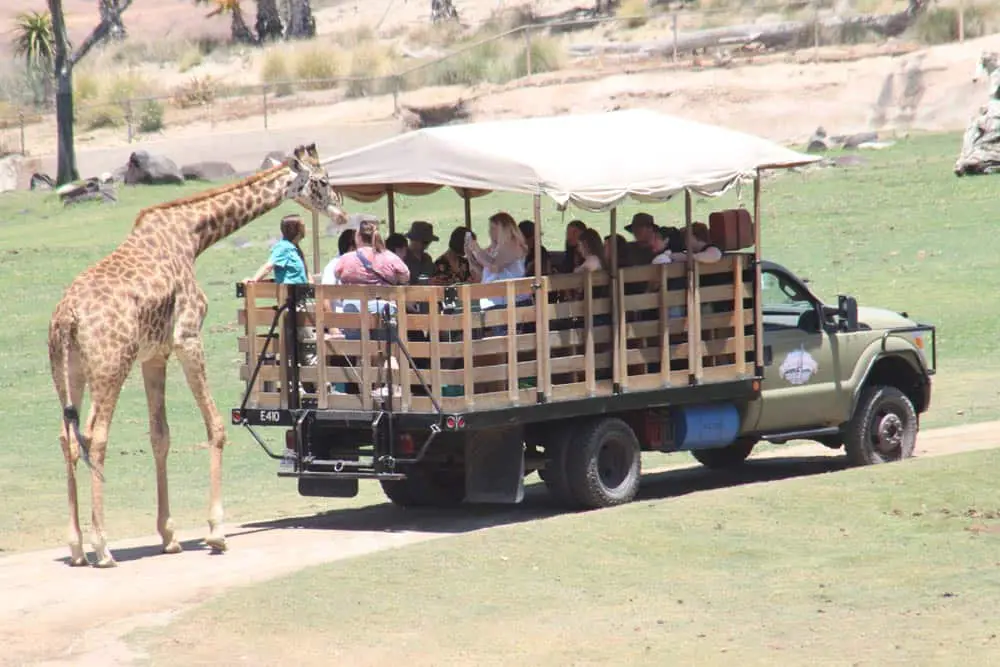
This is our favorite Safari, we’ve taken it several times. You ride a flatbed truck out into the wild animal herds in their large field enclosures. These include even the dangerously unpredictable cape buffalo who are sometimes called “ the black death ”. Fortunately, you will be accompanied by a knowledgeable guide familiar with their behavior to keep you out of trouble. The guides also point out other (safer) animal behaviors and answer your questions.
They’ll also help you feed the giraffes and sometimes rhinos if the critters are feeling curious and hungry. There are always so many great photo opportunities on this trip it’s sometimes hard to choose where to point your camera.
Roar & Snore Safari Is More Than Just Camping Overnight
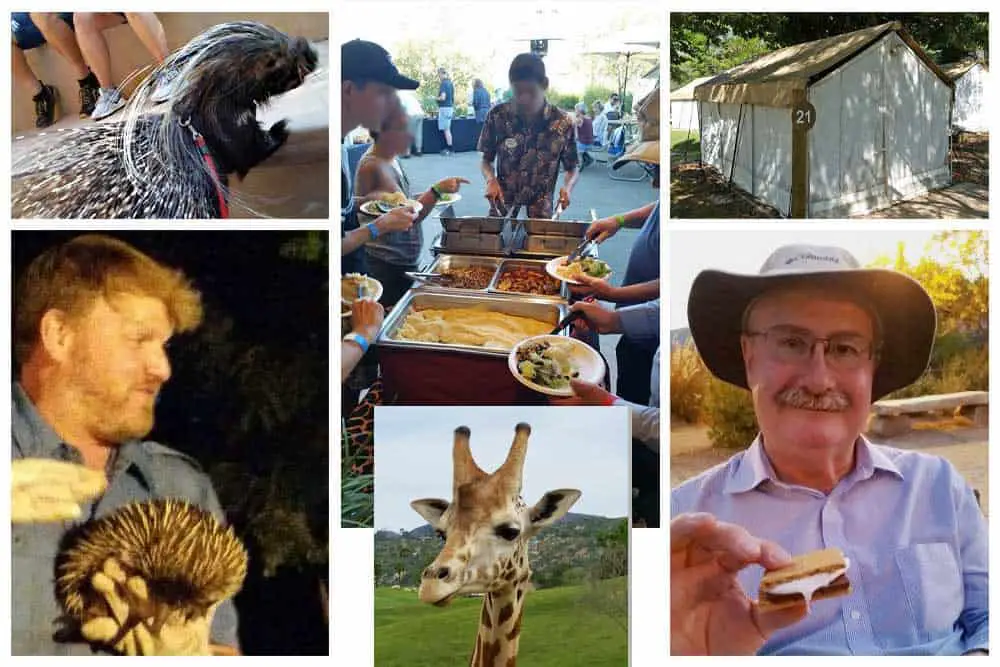
Experience the sights and sounds of an African safari without the killer plane ticket cost. You get to fall asleep to the sounds of elephants snorting and giraffes walking by. And the sounds of lions roaring may wake you the next morning. You get a tasty, filling dinner and a hearty breakfast. There’s also a night campfire where you can make gooey s’mores. There are guided night walks through some behind-the-scenes areas and a morning keeper presentation.
For more information, here’s my review of our Roar & Snore evening .
The biggest downside of the Roar and Snore experience is if you need to sleep on a good mattress. If that’s the case, this is not the tour for you. But don’t worry. I’ve written a guide to the best local hotels around Safari Park . There, your sleeping problem is solved!
Behind-the-Scenes Safari Shows You San Diego Safari Park’s Secret Places
Explore behind the scenes into areas not accessible to the general public. This guided safari’s a great way to get an insider’s view of some of the animals at safari park and the organization’s conservation efforts. You’ll also get a chance to meet and maybe feed some of the Safari Parks animal ambassadors. There are 7 different types of Behind-the-Scenes safari; platypuses, elephants, tigers, rhinos, kangaroos, cheetahs or butterflies.
Cart Safari is a Relaxed Tour Around the Large Field Enclosures
On the Cart Safari tour you get a chance to observe herds of giraffes, rhinos, antelope and other animals in a natural setting. Your driver is also an experienced guide. They’ll point out significant behaviors and would love to answer your questions about what you’re seeing.
It’s a more relaxed trip than the Caravan Safari and offers lots of photographic opportunities.
Flightline Safari -Fly Over San Diego Safari Park
Get your pulse pumping, and feel the wind in your face as you fly 2/3rds of a mile over herds of antelope, rhinos and giraffe.
You’ll get a training session from professional staff and take a short practice flight to get your landing technique down. Then you’ll take a truck up to a high ridge above the park and fly down.
TIP : Pay the little extra for a helmet camera to record your trip down. Using your cell-phone to make your own live video is not possible. You’ll need your hands free to hold your harness when you land.
Cheetah Safari – Meet the Spotted Speedsters
Watch the Cheetah Run at speeds close to 70 miles per hour from a prime reserved trackside spot. Then meet the speedy sprinter afterward for an exclusive close-up experience.
There will be plenty of opportunities to take amazing cheetah close-ups. But don’t waste your time trying for the perfect selfie with a cheetah. The Safari Park employees will make sure that you get a great shot with the big cat.
Another African animal ambassador will also be brought out for you to meet before the run. This Safari is relatively inexpensive so it fills up fast. Make your reservations early.
Balloon Safari – Get Above It All
Soar 400 feet above the scenic San Pasqual Valley and the herds of wild animals below. This is a tethered ride, so you don’t have to worry about floating away and landing within Lion Camp. This safari is very dependent upon favorable weather conditions.
Try to schedule your ride between 9 AM and noon. Winds tend to pick up speed in the valley during the afternoon. And the balloon safari does not fly during the Cheetah Run. It can spook the cats.
Ultimate Safari – Wish Fulfillment for Animal Lovers
Build yourself a custom safari experience with the assistance of the Safari Park’s professionals. Visit off-exhibit areas. Have close encounters with the animal ambassadors that interest you most. Make it as adventurous as you wish, zipline, balloon ride and rope courses, cape buffalo, feeding an elephant. Dream big. Explore Safari Park with your personal tour guide for up to 8 hours.
Board These Safari Park Rides
Africa tram is a must-do safari park activity.
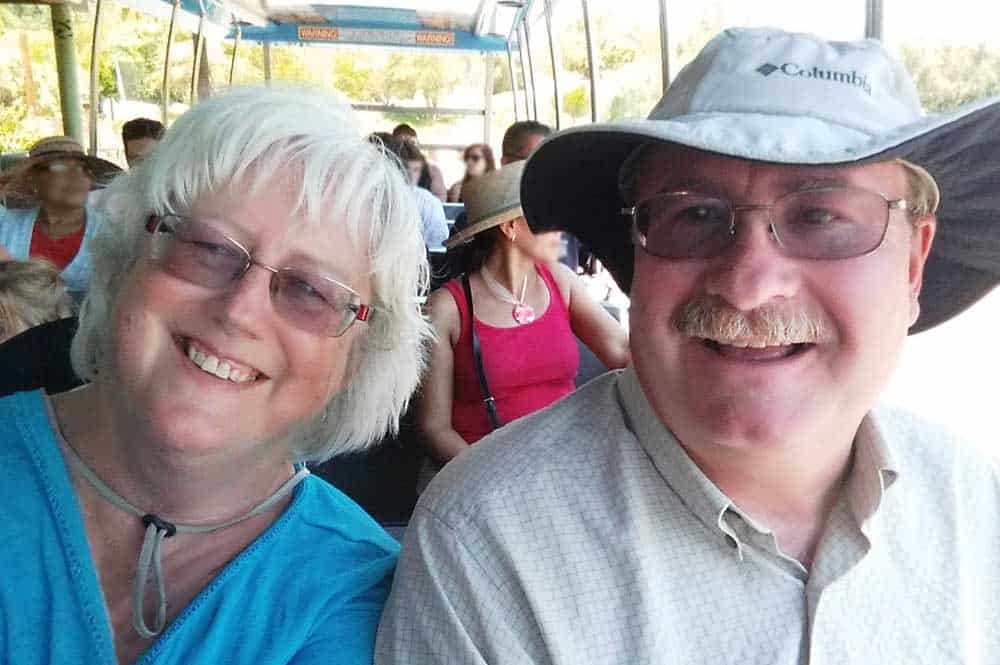
Africa Tram is a must-do activity especially if you aren’t going on one of the paid safaris. When you hop aboard it’s like you’ve been transported to the plains of Africa. You’ll see herds of giraffe, rhino, antelope and birds living together just as you would there. The tour guide drivers are very knowledgeable and quite often funny. They’ll point out unique animal survival tactics and adaptations and new babies in the large field enclosures.
TIP: The animals are most active when it’s coolest. On hot days try to catch the earliest tram rides or the latest ones. The tram starts running at 10 AM. It stops 45 minutes before the park’s closing. I’ve written an in-depth review with extra tips on my Safari Tours page .
Conservation Carousel
Have your kids (or you) ever dreamed of riding a tiger, a bear, or maybe even a zebra? You can do it on this merry-go-round. It features 60 endangered animals and was opened in 2005 . There’s a $6 fee to ride the carousel. (open 10 AM to closing).
Watch Shows and Keeper Talks at San Diego Safari Park
Shiley’s cheetah run is a must-see at safari park.
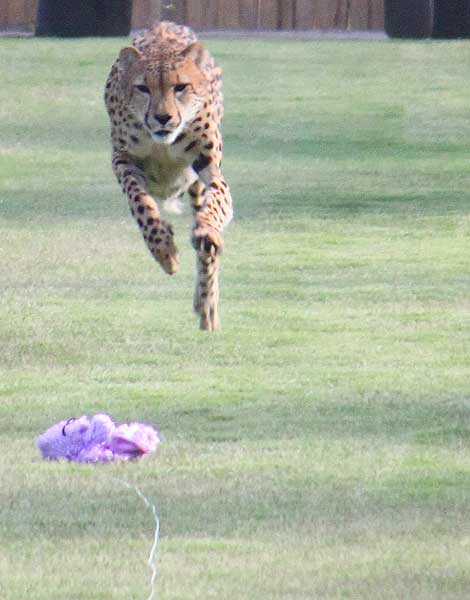
Don’t even THINK about visiting San Diego Safari Park without attending Cheetah Run . See one of these leggy cats explode out of its carrier and sprint after its prey (a stuffed animal on a motorized tether) at speeds close to 70 miles an hour. Six or 7 seconds later it comes to an abrupt halt at the end of the 100 meter run. It’s long tail whips around for balance and dirt goes flying as its feet dig into the turf. Spectacular. Hang around. Depending upon how the cheetah feels they sometimes run the course twice.
TIP : Get to the Shiley’s Cheetah Run track at least 30 minutes ahead of time. Good viewing areas are on the bridge close to Savannah Cool Zone and on the walkways closest to it. The entire presentation lasts about 20 minutes and usually starts at 3:30 PM. Confirm the time when you arrive at Safari Park.
Tiger Keeper Talk
Get close-up views of tigers and inside information on how they’re cared for at Safari Park. The keepers use this time to provide enrichment to the tigers as well as give them a quick physical exam. The Sumatran tigers are the smallest tiger. But they’re still intimidating as you see them stretch up on their hind legs to reach a meaty treat.
TIP : Arrive at least 20 minutes early for the 11:45 AM Tiger Keeper Talk. The 15-minute tiger training session is very popular.
Frequent Flyers Bird Show
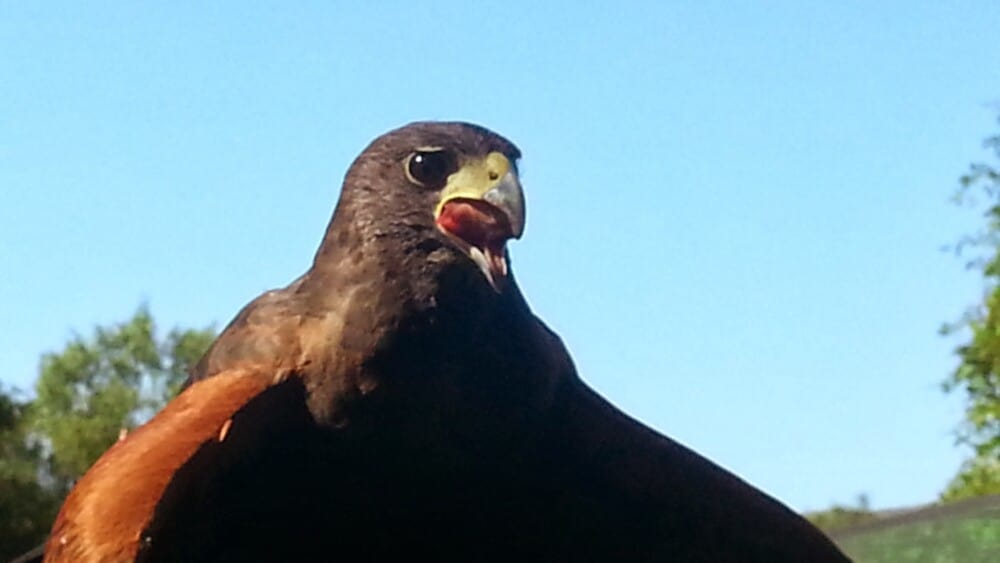
(Temporarily canceled due to avian flu)
This is an entertaining show, perfect for an afternoon sit-down break. You’ll experience exotic birds like owls, parrots, and large vultures flying just inches above your head. They’re close enough to reach up and touch (but don’t).
They’re not caged or tethered in any way. It’s an impressive example of the power of positive behavior conditioning and the patience and kindness of the keepers. The 20-minute show is presented twice, once at noon and again at 2:00 PM.
Animal Ambassador Stage
Get within a couple of feet of various Animal Ambassadors here. You never know what the keepers will bring out. I’ve gotten up close to tiny Kestrel hawks, echidna (an Australian spiny anteater which has spines like a porcupine, a beak like a bird, a pouch like a kangaroo, and lays eggs like a reptile) to a golden eagle and African serval cats.
Training Talk
Get an up-close look at free-flight bird training. Most people don’t bother with this presentation. That’s what makes it so good. You can often sit in the front row and see firsthand how expert animal trainers establish trust with their charges. Aside from being able to view exotic birds up close, it’s easier to ask questions in this forum. If you pay attention you can pick up tricks that can be applied to your cats, dogs, and maybe even kids to encourage them to do what you want them to.
Talk with Robert the Zebra
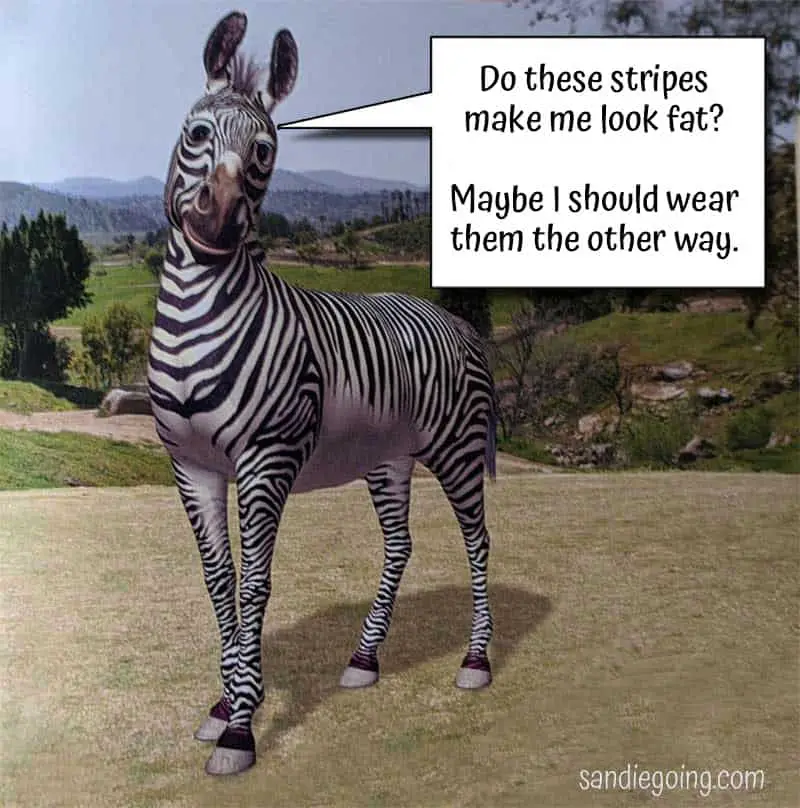
Chat with a digital, interactive zebra. He’s snarky, and clever and will keep your children occupied for 20 minutes with stories about what it’s like to be a zebra. Kids are fascinated by this cartoon zebra that carries on a conversation with them from a large-screen TV. You can talk to Robert every hour on the hour from 11:00 AM – 4:00 PM.
Visit These Can’t-Miss Safari Park Animal Exhibits
The platypus are a must-see at safari park in san diego.
These are the only platypus on exhibit outside of Australia…anywhere. So go see them. Give yourself some time and exercise a bit of patience in this exhibit.
First, it’s dark and you’ll need to let your eyes adjust to the bright San Diego sun.
Second, platypi move fast and rarely stay put in one spot. Getting a good photo can be a challenge. Just have fun looking at these energetic creatures.
Gorillas have always been one of the most popular animals at Safari Park and the Zoo. Go anytime. They are fed five or six times per day with leaves, stems, fruit, seeds, and roots. Be sure to check out the Gorilla Activity Center. Compare your arms to those of an adult male gorilla on a drawing, listen to their vocalizations, and watch a video on how the keepers care for them.
Elephant Valley
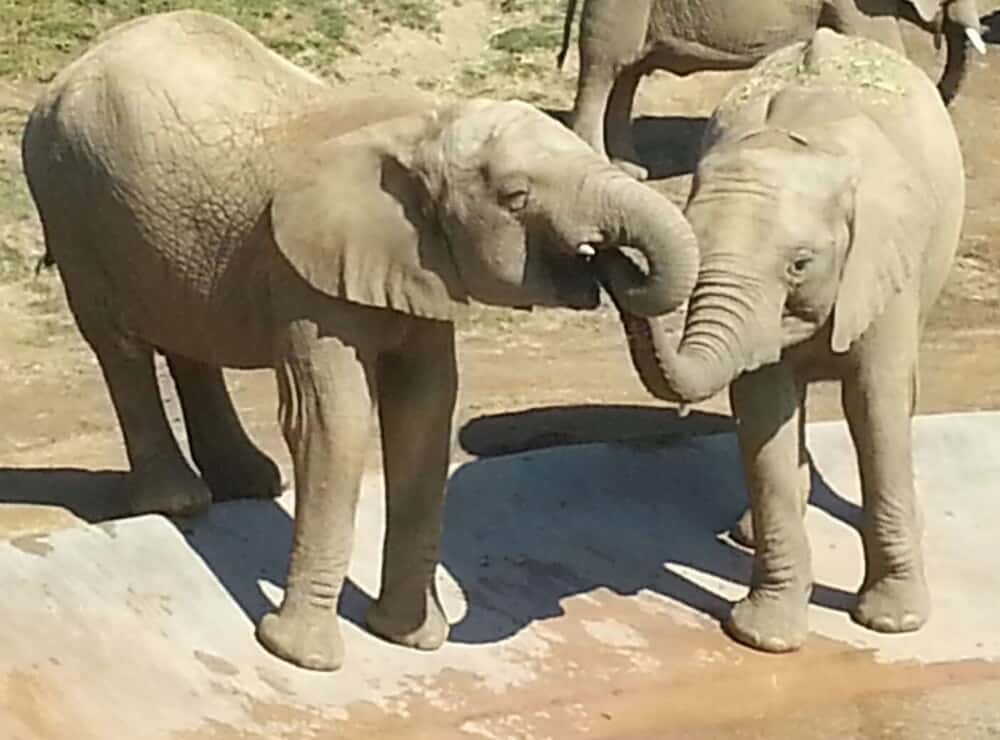
(Elephant viewing may be limited due to the construction of the new, larger ‘Elephant Valley’ exhibit.)
There are few things as wonderful as seeing elephants playing in the water. There are two swimming pools for the San Diego Safari Park herd in this 5-and-a-half acre habitat.
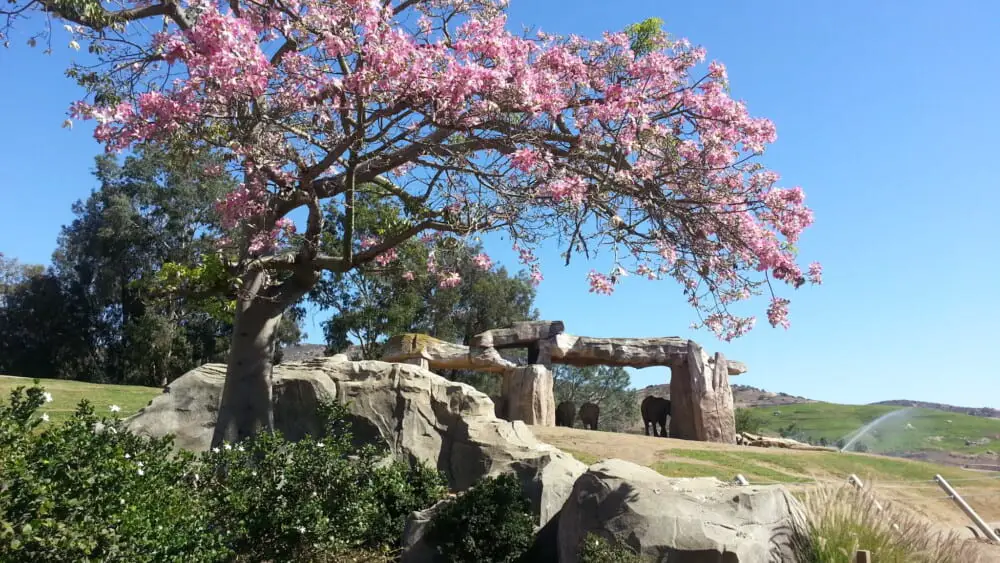
There are two main yards. One is usually open while the other is being cleaned of copious amounts of elephant dung and stocked with treats. In most cases, the Elephant Viewing Patio will be the best place to watch them.
NOTE: Open observation points may differ during the construction of the new Elephant Valley exhibit.
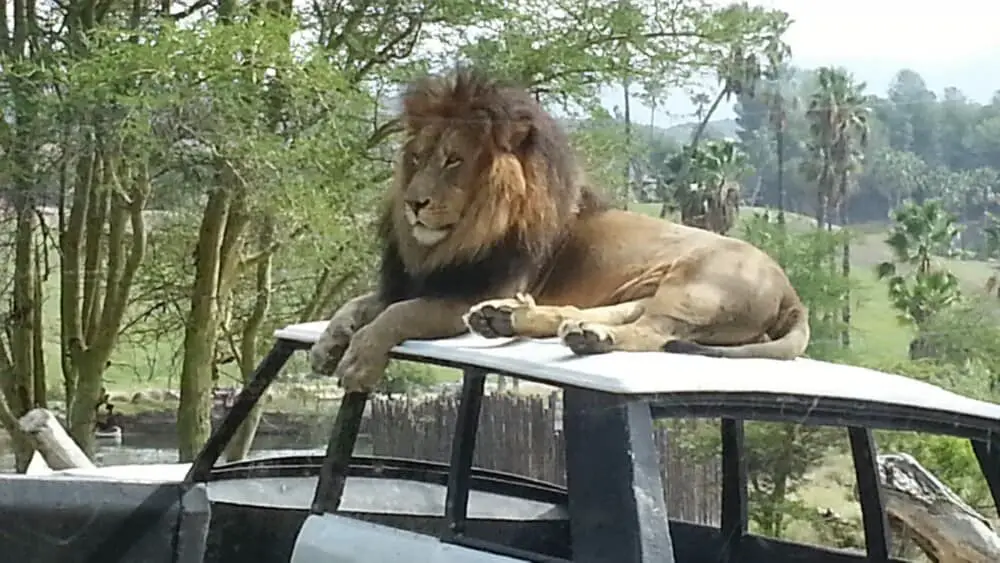
The lion exhibit at San Diego Zoo is justifiably famous for its design. It’s both visitor friendly and great for the lions themselves. There are many places to view lions from the large windows by the air conditioned rocks, to rock piles and an ‘abandoned’ jeep that sometimes hosts a very large sleeping feline. The lions have wonderful views of the large field enclosures filled with tasty meals on the hoof. Think of it as must-see cat TV.
Tiger Trail Sambutan Longhouse
If you love tigers, you’ll love Tiger Trail. It’s green and lush and the perfect place to watch tigers watching you. For more information on what’s there and why you should go there, check out my “ 11 Coolest Reasons to See San Diego Safari Park Tiger Trail ” page.
Kangaroo Walk in Walkabout Australia
At Kangaroo walk you can go inside the exhibit and see wallabies and kangaroos go bounding by on all sides. And if you’re lucky, maybe one will stop within petting distance. They’re super soft and feel like they’re covered is fuzzy wool.
Petting Kraal
Kids love brushing and petting the three types of small African goats here. One word of caution. Goats will try to eat ANYTHING. So make sure that your cameras, purses and wallets are tucked away safely. Any children that are intimidated by the rambunctious kraal critters can relax next door at the Village Playground. Because of their proximity, it’s easy to keep an eye on both areas.
Kids Love These Playgrounds At San Diego Safari Park
Samburu jungle gym .
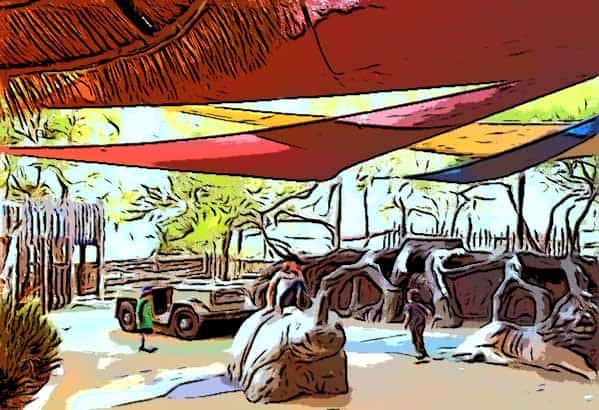
This will be your favorite playground at Safari Park. Your kids can climb on a rhino or pretend to be driving a jeep across the African plains. And you can watch their antics while relaxing in the shade at Samburu Terrace. Sip a cold one and have lunch while your offspring work off their excess energy.
Savanna Cool Zone
Your kids can have a wet and wild time here while you sit in the shade and keep an eye on them from tables by Lion Camp Slush and Snacks.. It’s perfect for hot summer days. There are play statues shaped like lions and tortoises with squirt fountains coming from their heads on a soft spongy play surface.
Camp Play Area
Kids climb, slide and run on tree trunks in a simulated logging camp hidden within the lush wooded landscape of Tiger Trail. There are also statues of a tiger mom and her cubs where you can take memorable photos of the kiddos.
Village Playground
KIds have fun experiences in this interactive play area designed as an African Village. It’s located next to the Petting Kraal in Nairobi Village. This is great planning because some children are frightened by the curious goats poking their noses everywhere looking for treats. It’s much easier for parents with several kids to keep an eye on everyone here.
Jameson Research Island
Your kids will have buckets of wet fun here…literally. Buckets periodically dump cooling water in one of the play areas on the island. Even though the African Loop that goes past the flamingos and colobus monkeys goes over water, the path can get very warm in the summer and early fall.
Explore These Gardens at San Diego Safari Park
Bonsai pavilion is the best garden at san diego safari park.
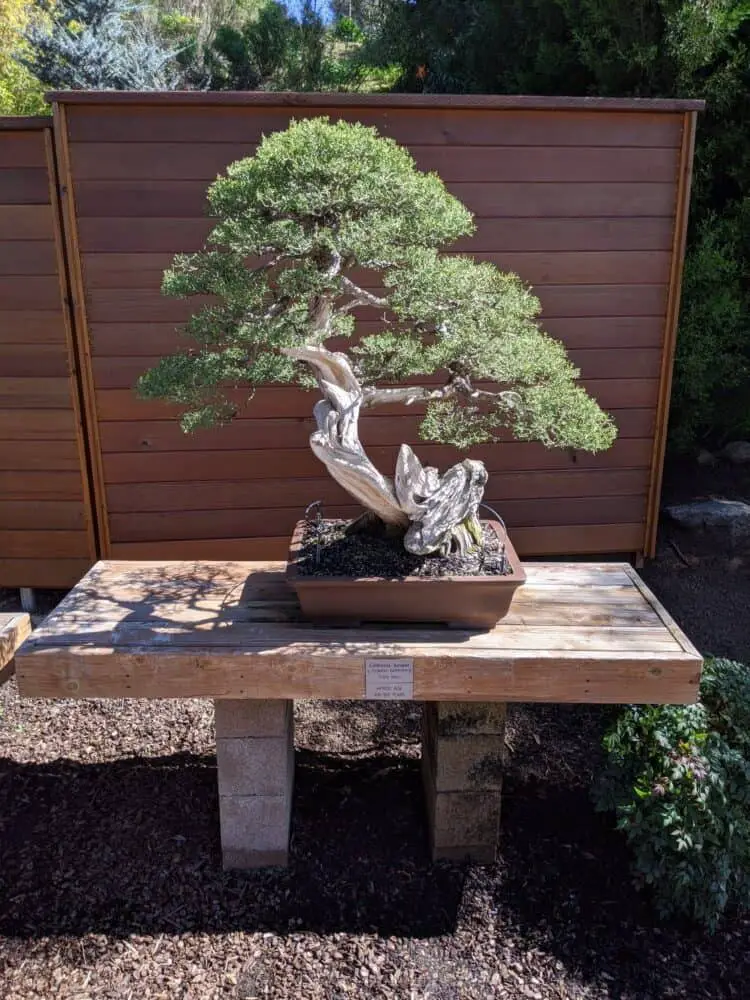
The Bonsai Pavilion at San Diego Safari Park is fascinating even to those who aren’t into gardening. These aren’t just plants, they’re art.
Bonsai is a Japanese word that roughly translates into “tree in a tray”. Ordinary young trees are shaped by pruning and cutting to mimic the natural effects of centuries of wind and weather on a small scale.
Baja Gardens, Old World Succulent Gardens, and California Nativescapes Garden
Take a walk on the wild and spiky side in the World Gardens. These three gardens will amaze you with the wide variety of plant shapes, colors, and sizes found in the world’s arid areas. It’s like a journey through a Dr. Seuss book with elephant trees , euphorbias , and over 200 boojums .
TIP: Bring a water bottle. These gardens are located at the highest elevations in the park that are open to the public. They can be physically challenging, especially during the hot afternoons in August and September. The best time of the year to see these exhibits is early May when many of the plants are blooming.
Epiphyllum Trail
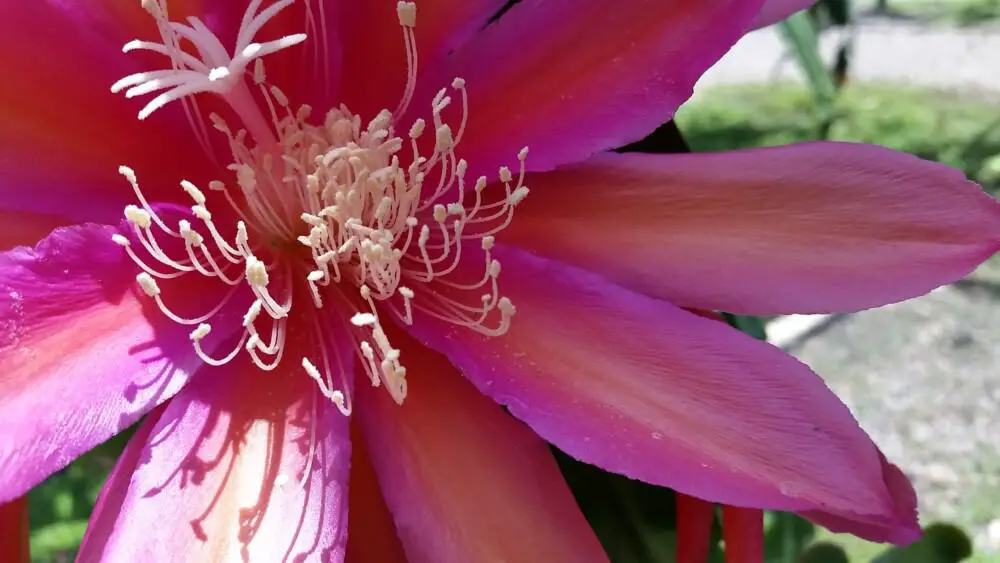
The blooms in this garden are spectacular from April through early July. At other times this garden is rather boring.
Epiphyllum are cacti indigenous to central America and Mexico. They live in the crooks of trees and get water from the moisture in the air. Almost all of the plants are hybrids that combine the characteristics of several different naturally occurring species.
Herb Garden
Give your nose a treat. Take the thyme to smell the roses, it won’t cost you a mint because entry to this garden comes with your San Diego Safari Park admission, Herbs have been used for centuries to flavor food, treat illnesses and make us smell good. There are over 20 different species of herbs here.
Hidden Jungle
Wander through a tropical rainforest complete with towering trees, flowering vines, and exotic birds. Many of the birds are named for their colors like the blue-capped cordon bleu, pink pigeon, and purple grenadier.
In springtime, half of this exhibit is home to Butterfly Jungle and you’ll see many more colorful wings than usual. The other half of Hidden Jungle is reserved for birds that eat butterflies and other insects. It’s a natural way to keep the butterflies inside.
TIP: Visit this exhibit in the morning or late afternoon. This is an enclosed greenhouse. It can be hot and humid.
Mombasa Lagoon
Even though this area is listed by Safari Park as a garden, the major attraction here is the birds, not the plants. At any given time there are over 150 avians here from about 25 different species. There are cormorants fishing, storks, ducks, and my favorite, the shoebill. It looks like something out of Jurassic Park.
If you see some of the birds taking off and flying away, don’t worry. They’re most likely local freeloaders like great blue herons, egrets or migratory birds like mallards.
Additional Tips for Visiting San Diego Zoo Safari Park
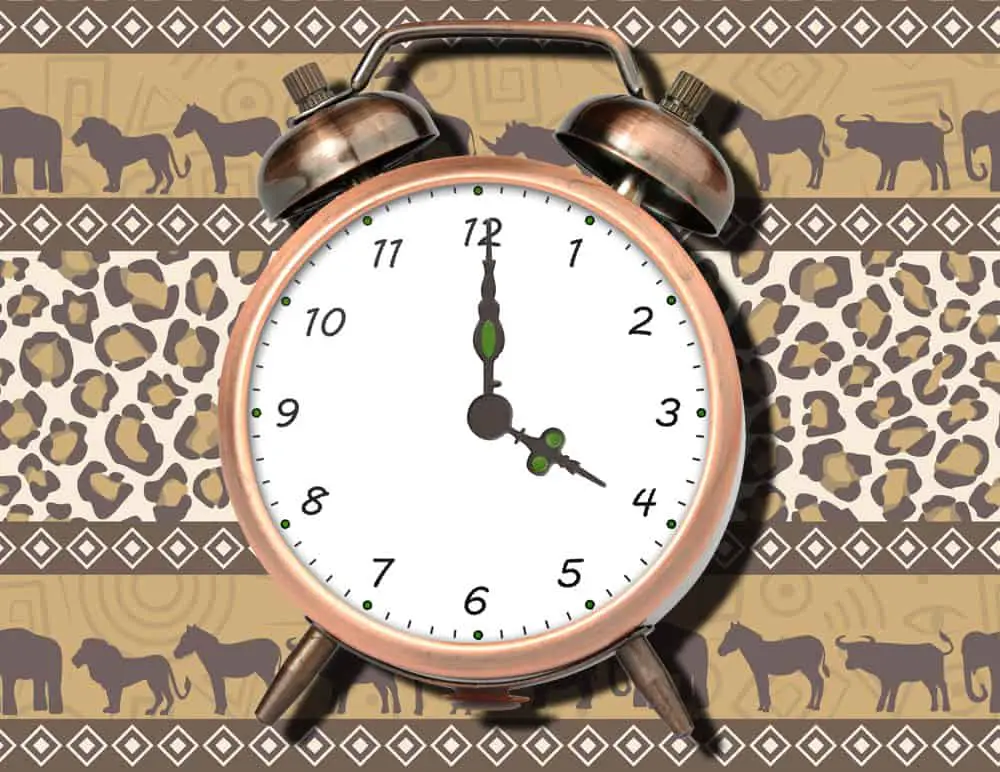
How long does San Diego Zoo Safari Park Take?
People in online forums say that it’s possible to see Safari Park in two hours. They’re wrong.
San Diego Zoo Global recommends allocating at least 4 hours . The only way to “do” Safari Park in 2 hours is to just walk to Africa Tram to ride it and then walk back to the parking lot. Keep in mind that the park is at least 45 minutes of travel time from downtown San Diego…each way. Then add another 30 minutes for parking and walking to and from the entrance.
If you’ve only got 2 hours and you’re near downtown San Diego, just go to the Zoo in Balboa Park. Take the money that you’d have spent for getting to Safari Park and buy a nice dinner with some wine at Albert’s Restaurant .
What’s the best day to go to San Diego Safari Park?
The best days to visit Safari Park are typically Tuesdays and Wednesdays on weeks without a major holiday. The park is less crowded on these weekdays . If you’re going on a holiday weekend, get there at 9:00 AM when it opens .
Click HERE to check your date(s) to see if Safari Park will be crowded.
Safari Park can get very warm in late August and September. These are the days when temperatures can be over 100°F (38°C). It doesn’t happen very often, but make sure that you’ve packed hats and refillable water bottles if you decide to go then.
Don’t let a bit of rain keep you from going to Safari Park. It can be a delightful experience. Here’s a page that I wrote giving you tips and hints for enjoying Safari Park in the rain .
What’s the Best Time to Arrive at San Diego Safari Park?
It’s best to arrive at San Diego Zoo Safari Park just before opening at 9:00 am. Many of the animals at Safari Park will be more active when it is cool. Also, keepers generally put out enrichment and treats first thing in the morning. That encourages the animals’ natural foraging behaviors and keeps them from getting bored.
Where’s the Best Place to Eat in Safari Park?
The best restaurant in San Diego Safari Park is The Watering Hole at Kijamii Overlook. But it may not be the best for you. So I’ve written an entire page about all the restaurants and eateries at and around Safari Park . Chow down!
7 Things You Should Wear to San Diego Safari Park
Closing thoughts.
I hope that you’ve found this post on what to do at San Diego Safari Park useful in planning your day. Because this attraction is not your ordinary zoo, some people can get overwhelmed by all the options and just decide not to go. I didn’t want this to happen to you. Let me know if you have questions on any of the Safari tours, rides, activities, play areas or if you know of a great tip for visiting San Diego Safari Park.
Nancy Ulrich
I'm nuts...about animals, polymer clay, mixed media art & husband Bob. Happily planted in San Diego among good friends, family that I would have chosen if given the choice and optimism for a bountiful future for us all.
Recent Posts
Discover the Best Hotels Near San Diego Zoo Safari Park in Escondido 2024
I've got the scoop on the best hotels near San Diego Zoo Safari Park in Escondido for 2024. These highly-rated spots offer awesome amenities and prime locations. Plus you can score a 20% discount....
3 Best Kid-Friendly Hotels Near San Diego Zoo on a Budget
Discover the top kid-friendly hotels near the San Diego Zoo that are affordable too. My chart compares cost, distance, and number of family amenities. Reviews with room tips help you choose the best...
Panda Ridge Now Open
- Help Center
- Plan Your Visit
- Places To Stay
- Upgraded Experiences
- Youth Programs
- Student & Youth Groups
- Events & Catering
- Live Cameras
- Our Mission
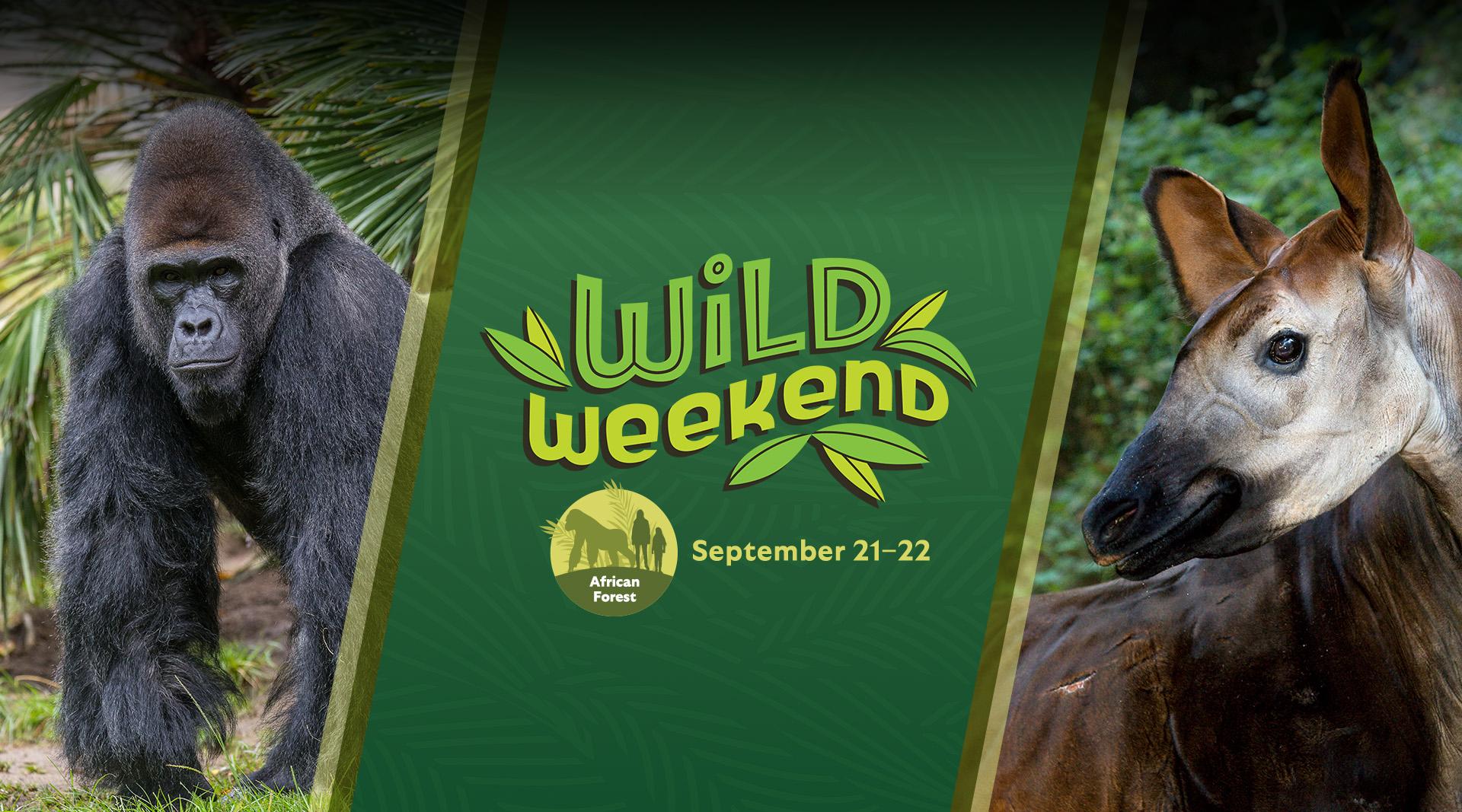
Wild Weekend: African Forest
Central African forests are teeming with wildlife and are critically important to the health of our planet. Their lush river valleys and rocky mountain peaks contain the world’s second-largest tropical rainforest, an abundance of rare plants, and some of the most endangered primates on Earth—including Western lowland gorillas. In Cameroon, we’re working with local communities to protect wildlife and biodiversity across this vast region.
Join us to celebrate World Gorilla Day and Wild Weekend: African Forest on September 21–22 at the San Diego Zoo. Rustle through the brush and explore how we’re saving, protecting, and caring for fascinating wildlife throughout this forest landscape. From 9:30 a.m. to 2:30 p.m., swing into immersive activities for wildlife allies of all ages and discover how you make a difference through our African Forest Conservation Hub .
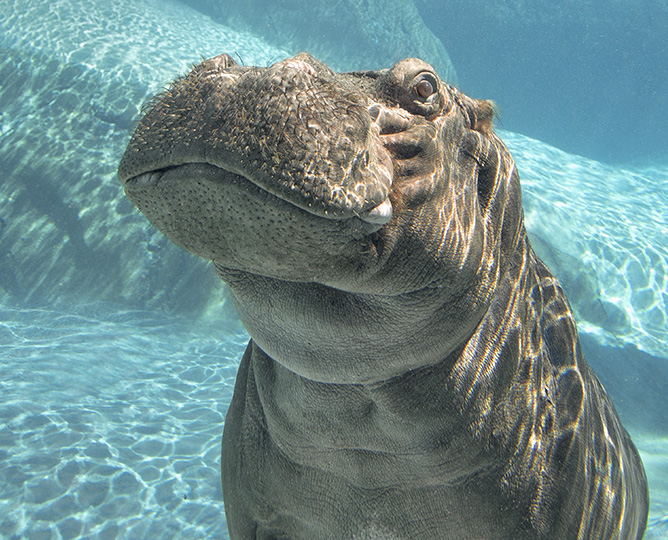
Wildlife Care Specialist Talks
- Various Locations
Connect with wildlife care specialists to engage with the African forest’s wildlife and the incredible efforts you make possible to protect their future.
- Lemurs : 10 a.m., Lemur Habitat, Africa Rocks
- Colobus Monkeys & Black Mangabeys: 10:30 a.m., Sun Bear Forest, Lower Center Street near Map Locator #13
- Gorillas : 11 a.m. & 12:30 p.m., Gorilla Habitat, Lost Forest
- Hippos & Okapis : Noon, Hippo Habitat, Hippo Trail
- Swamp Monkeys, Otters, & Red River Hogs : 1 p.m., Ituri Forest, Lower Hippo Trail near Ituri Shopping and Dining
- Slender-Snouted Crocodile : 2 p.m., Monkey Trail, Lost Forest next to Pygmy Hippos
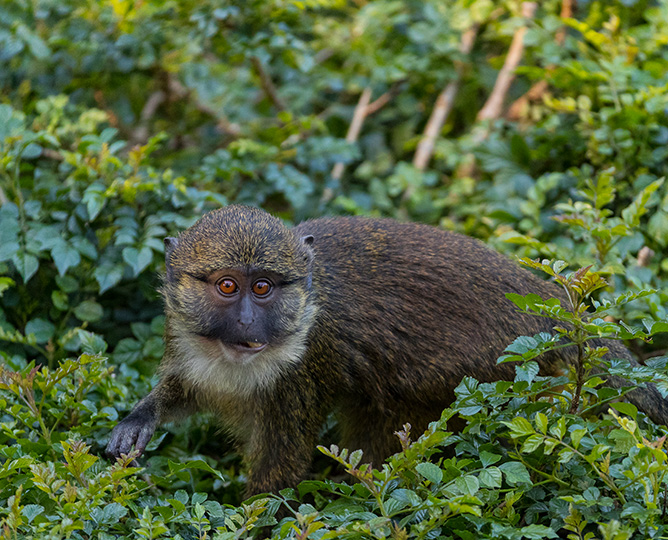
Interactive Activity
- 9:30 a.m.–2:30 p.m.
- Treetops Plaza
You’re surrounded by breathtaking green foliage. The wind rustles through the trees, a bird—or maybe a monkey—calls in the distance, and a creek trickles calmly somewhere nearby. Join us for an interactive activity, where you’ll be immersed in the sights and sounds of the African forest.
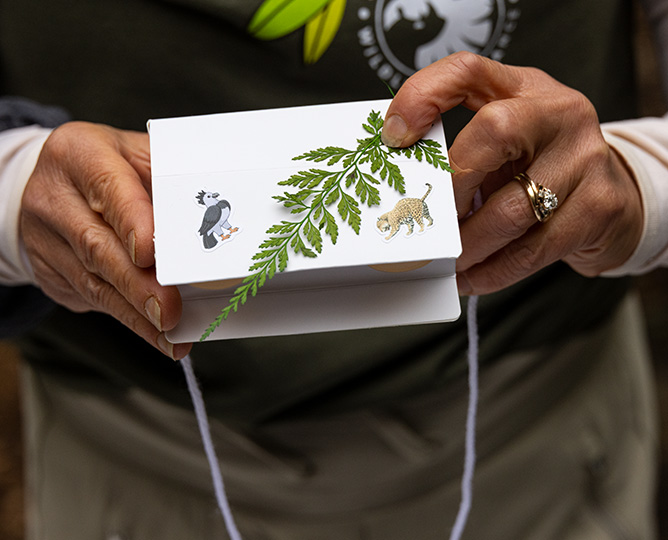
African Forest Craft Corner
Discover fascinating wildlife found throughout the African forest and take home a handmade craft!
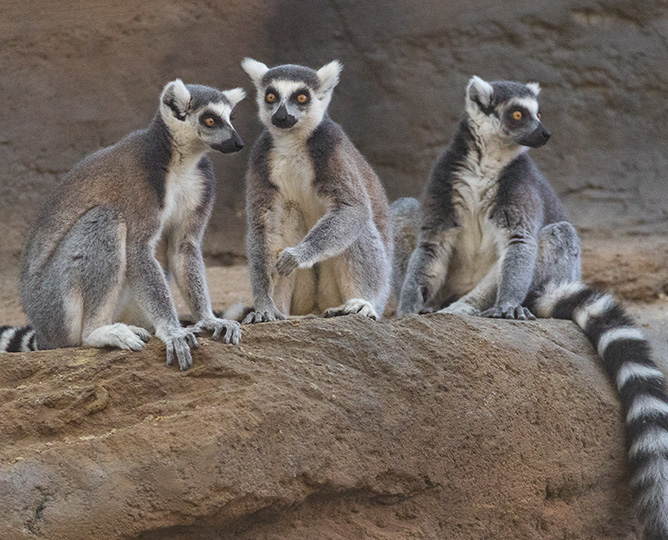
Chat with a Conservationist
Conservation starts with each and every one of us. Meet with our experts to hear straight from the source about our work through our African Forest Conservation Hub —and discover how your support makes a crucial difference across the globe.
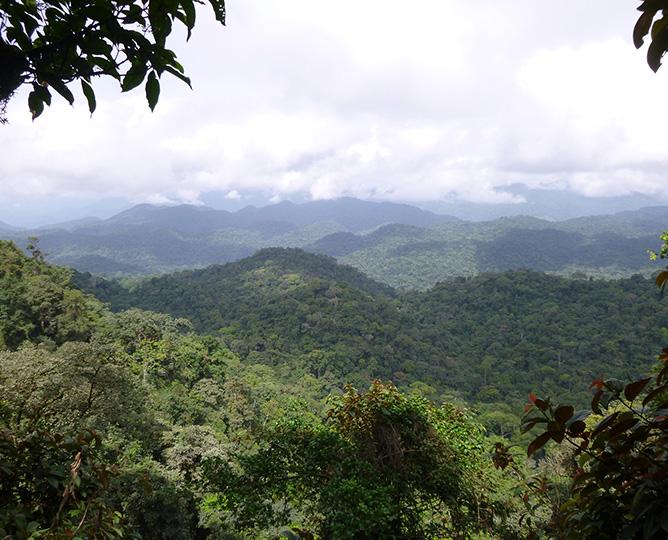
Ask a Horticulturist
The Ebo forest is home to vast plant life, and conservationists frequently discover new flora. Take a deep dive into the wonders of this biodiversity hotspot with our team of experts.
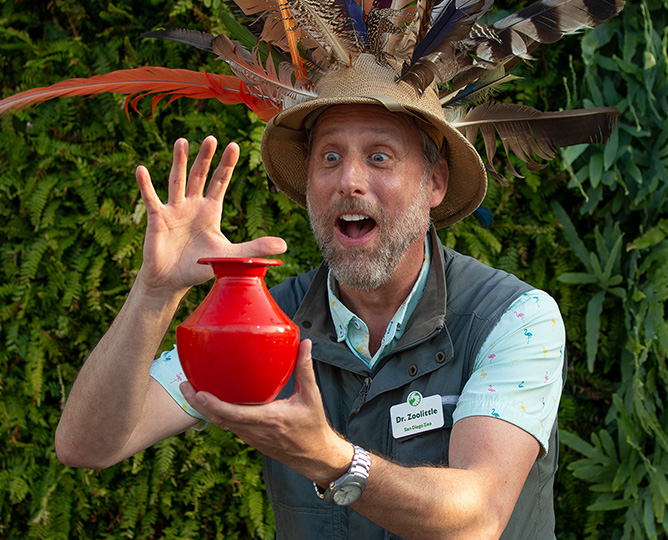

Meet Dr. Zoolittle
Chat with your favorite wildlife science explorer throughout the day and learn about the wildlife of this region.
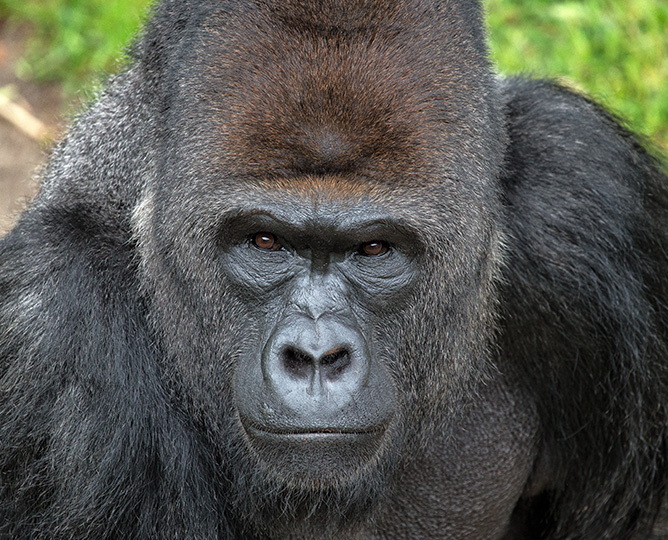
Be an Ally for Wildlife
Express yourself in a community art project to support conservation efforts that help save and protect vulnerable wildlife.
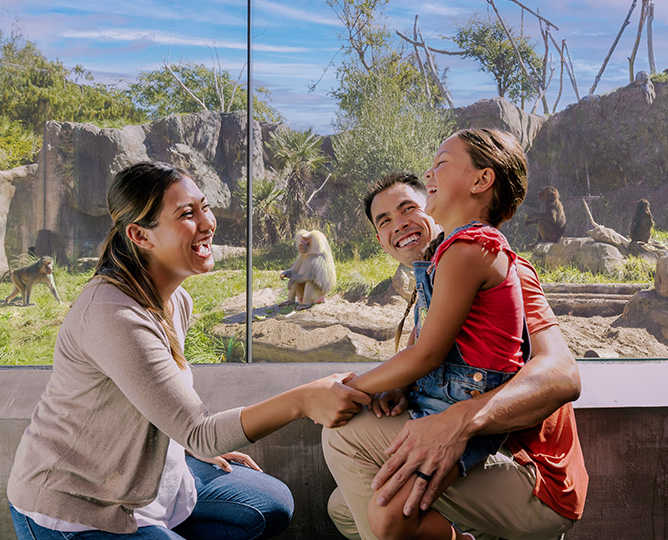
Inside Look Tours
- SECURE YOUR SPOT
Embark on an entertaining and educational adventure! This 90-minute experience offers guided views, insights on how we care for wildlife, and stories you won’t hear anywhere else. You’ll be escorted around the Zoo in a cart by one of our expert guides. All participants require a ticket for the experience, regardless of age.
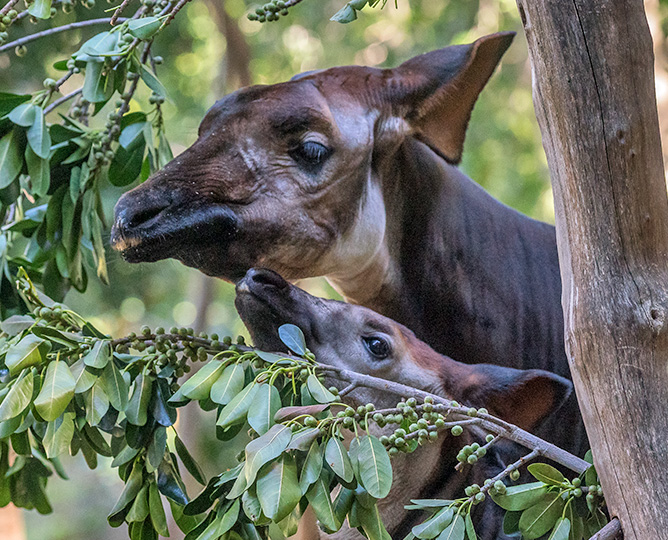
Support Wildlife
Share your love for African forest species and take some souvenirs home with you! Your purchases help safeguard the future for endangered species and the ecosystems we all share.
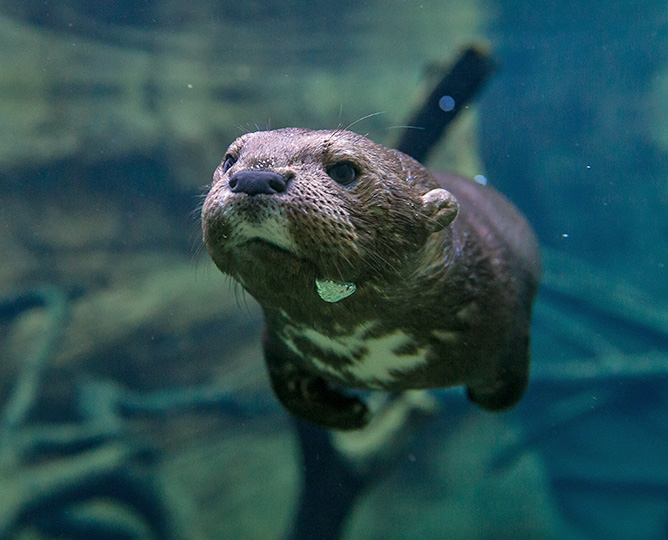
Become a Wildlife Ally
As a wildlife ally, your visits to the Zoo and continued support help save wildlife here in the Southwest, across lush African forests, and around the globe. Become a hero for wildlife and support our African Forest Conservation Hub with a monthly gift today !
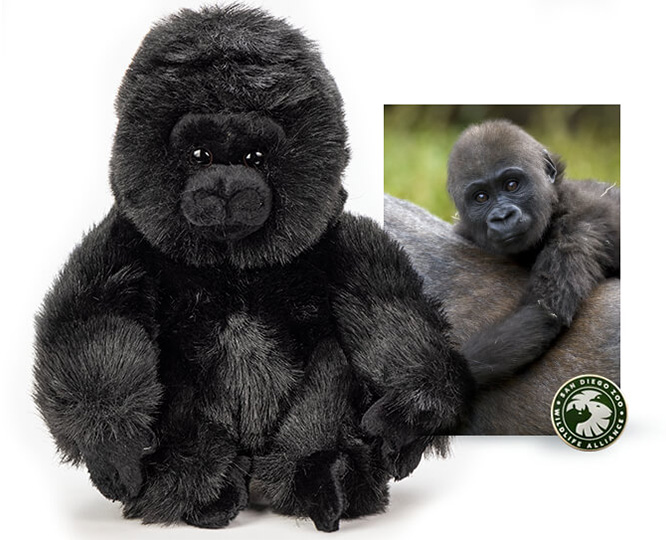
Adopt a Gorilla
- SAVE WILDLIFE
Your symbolic adoption supports community-led efforts to save critically endangered gorillas and other wildlife in the Ebo forest and beyond. Together we can create a world where wildlife, people, and the planet we all share thrive.

PREFERRED HOTELS
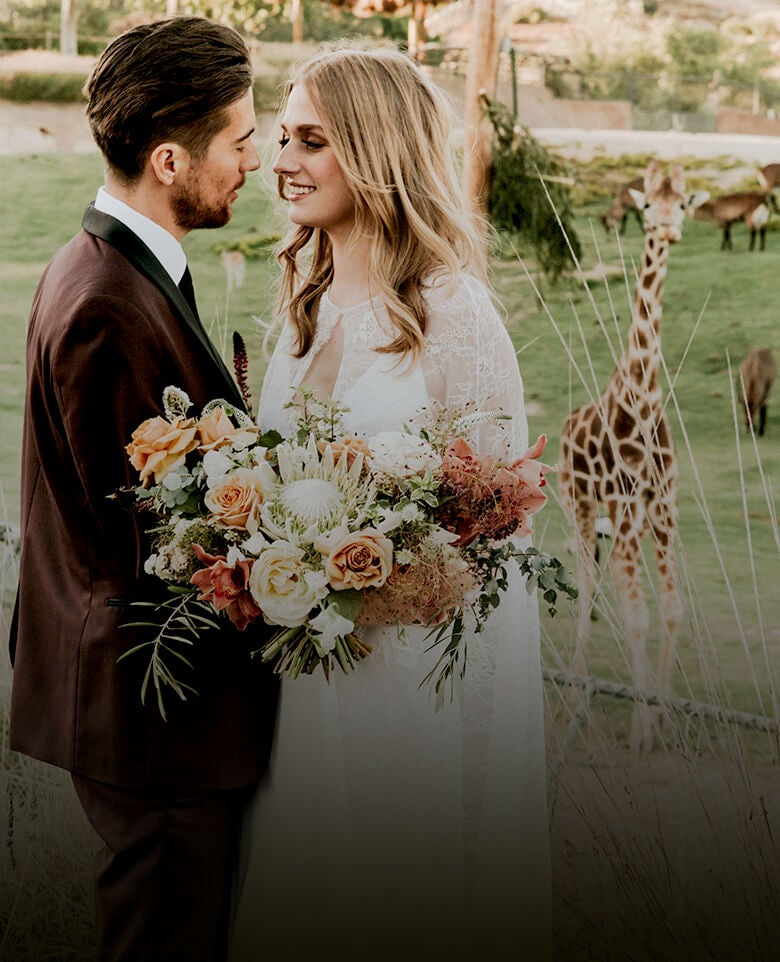
Picture Your Special Day at the Park!

JOIN THE PANDA-MONIUM
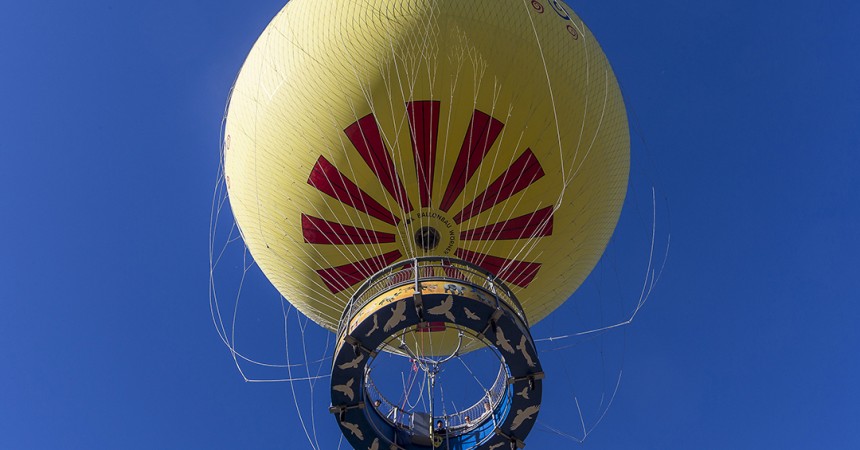
Balloon Safari Takes Flight at San Diego Zoo Safari Park
A yellow tethered helium balloon ascended into the air this morning at the San Diego Zoo Safari Park as staff prepared for the re-opening of the Balloon Safari experience. A newly designed balloon will be lifting guests 400 feet in the air starting this Saturday, Feb. 7, as guests observe clear and unobstructed views of giraffe, rhinos, impala and other exotic and endangered animals at the Safari Park.
The Balloon Safari offers sweeping views of the Safari Park, its animals, and the surrounding beautiful San Pasqual Valley.
Modeled after the hot air balloon tours of the Serengeti, the Balloon Safari can hold up to 30 passengers in an open-air gondola as the tethered balloon rises silently into the sky. The Balloon Safari allows guests to hover in place over the Safari Park, experiencing the view that the hawks, eagles, and other birds in the San Pasqual Valley see. Designed by the company Aerophile, the system consumes no more energy than an elevator and is completely noiseless.”Now that we have the new balloon, we will be able to take more passengers on more flights daily,” Dami An Jones, operations manager of admissions and guest services said. “We have a better capacity for the different weather conditions that we have here in the valley, so we will be able to offer more flights for our guests to enjoy a wonderful scenic view.”
The Balloon Safari takes 8-10 minutes and costs $20 for guests. Children 11 and younger must be accompanied by an adult, and the safari availability is subject to weather conditions. For more information visit sdzsafaripark.org.
Bringing species back from the brink of extinction is the goal of San Diego Zoo Global. As a leader in conservation, the work of San Diego Zoo Global includes onsite wildlife conservation efforts (representing both plants and animals) at the San Diego Zoo, the San Diego Zoo Safari Park, and San Diego Zoo Institute for Conservation Research, as well as international field programs on six continents. The work of these entities is inspiring children through the San Diego Zoo Kids network, reaching out through the Internet and in children’s hospitals nationwide. The work of San Diego Zoo Global is made possible by the San Diego Zoo Global Wildlife Conservancy and is supported in part by the Foundation of San Diego Zoo Global.
Related Posts
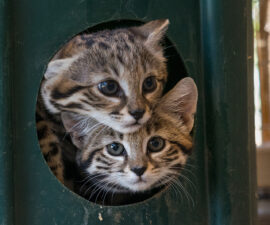
Black-footed Cat Kittens Growing Fast at the San Diego Zoo Safari Park

Safari Park Flock Receives Avian Vaccine
Recommended.

The Hatch of 2020
- Wildlife Care
SDZ Safari Park - Travel Guide 4+
Park map & walking directions, san diego zoo.
- 4.8 • 2.8K Ratings
iPhone Screenshots
Description.
Use the San Diego Zoo Safari Park app to get the most out of your visit to the Safari Park! Follow one of the preset walking paths or find directions to your favorite animal. Finding your way around has never been easier! Plan your day by adding must see animals, dining, and shopping experiences.
Version 1.1.21
This update contains minor updates, bug fixes, and performance improvements.
Ratings and Reviews
2.8K Ratings
Safari Park Zipline
A great experience well worth doing. The park does a phenomenal job pre-training you for the zipline! First they set you up with your flight gear, show you a video, explain the process while answering all your questions. Next they provide a box you put your personal property in so you won’t lose it on your flight, which protects your property and the animals below. (At the box office, they also offer a cool phone strap you may purchase for $10 so you can video your experience without fear of losing your phone. Wish I bought two of them. Best souvenir ever!!!) As a fledgling you will go on a fun test flight first before your 3/4 of a mile flight over the Safari animals. After your test flight you will travel in a Safari truck through areas of the conversation park where regular guest never see. Everyone is fun, kind, cautious, and professional. You are safe 100% of the time. While you zipline you will be sitting comfortably and your stop is similar to being on a swing. I could have done this all day! The view going down was amazing so don’t miss this!
Great experience! Food, animal access, & service
We brought a dear friend who was pregnant and were able to use the ADA services pick-up spots! That made it possible to ride the tram & select from multiple food options. Kudos! We LOVED seeing the only platypuses on display in this country & glad that the San Diego Zoo has been entrusted to breed them! Close access to the tiger family was fascinating & exciting. The Australian walkabout (kangaroos, wallabies, etc & the red panda) clearly offered a view into what it might be like in the Outback! Thank you!
Difficult to know which way to go
This was my first time visiting the safari park with my family and I downloaded the map right away. I loved that it gave updates and events that day and knew my current location. I also loved that I found filter the map by animals, attractions, food, etc. The problem I had was the map wouldn’t face the way I was going or even adjust to recently as I walked from place to place, so I often found myself taking a wrong turn and not realizing it until the blue line starting growing instead of shrinking on my directions. There were also a few times when the map said I wasn’t even on a path and I definitely was. I ended up using the paper map by the end of the day.
App Privacy
The developer, San Diego Zoo , indicated that the app’s privacy practices may include handling of data as described below. For more information, see the developer’s privacy policy .
Data Linked to You
The following data may be collected and linked to your identity:
- Contact Info
- Identifiers
- Diagnostics
Data Not Linked to You
The following data may be collected but it is not linked to your identity:
- Search History
Privacy practices may vary, for example, based on the features you use or your age. Learn More
Information
- Developer Website
- App Support
- Privacy Policy
More By This Developer
San Diego Zoo - Travel Guide
Living Legends
Danceabout Australia
San Diego Zoo Education
You Might Also Like
LEGOLAND California - Official
Sesame Place
Pronto - San Diego
ACE Parking
Cross Border Xpress
Laguna Beach Parking
Cloned endangered horse now calls San Diego Zoo Safari Park home
By city news service • published september 7, 2023 • updated on september 7, 2023 at 5:53 pm.
The San Diego Zoo Safari Park is now home to the world's second successfully cloned Przewalski's horse, a critically endangered species previously considered extinct in the wild until 1996, it was announced Thursday.
The foal, born Feb. 17, 2023, and his surrogate mother, a domestic quarter horse, were recently moved from his birthplace at ViaGen Pets & Equine cloning facility in Texas so he can learn the language of being a wild horse from his own species, a statement from the zoo reads.
24/7 San Diego news stream: Watch NBC 7 free wherever you are
The foal was given the name "Ollie" in honor of Dr. Oliver Ryder, director of Conservation Genetics at San Diego Zoo Wildlife Alliance. Ryder began his career at the zoo in 1975 under the guidance of Dr. Kurt Benirschke, who was instrumental in founding the conservation research program at San Diego Zoo Wildlife Alliance.
"It is an honor to have studied and worked with so many others on the conservation of this special animal and to see come alive the possibility of using advanced genetic and reproductive technologies to sustain resilient populations in human care and in their native habitat," Ryder said.
Get top local stories in San Diego delivered to you every morning. Sign up for NBC San Diego's News Headlines newsletter.
The world's first cloned Przewalski's horse, Kurt -- named after Benirschke and also living at the Safari Park -- is the genetic twin of Ollie, as he was born in August 2020 from the same stallion's living cell line. That cell line was cryopreserved more than 40 years ago in the San Diego Zoo Wildlife Alliance Biodiversity Bank's Frozen Zoo.
Formerly extinct in the wild, the species has survived for the past 40 years almost entirely in zoos, and nearly all of the surviving horses are related to just 12 Przewalski's horses born in native habitats, a zoo statement reads.
The species has since been reintroduced to its native grasslands in China and Mongolia, but scientists say there is more work to be done to ensure genetic variation and thus the species' survival.

These San Diego senior pets are still searching for their forever homes
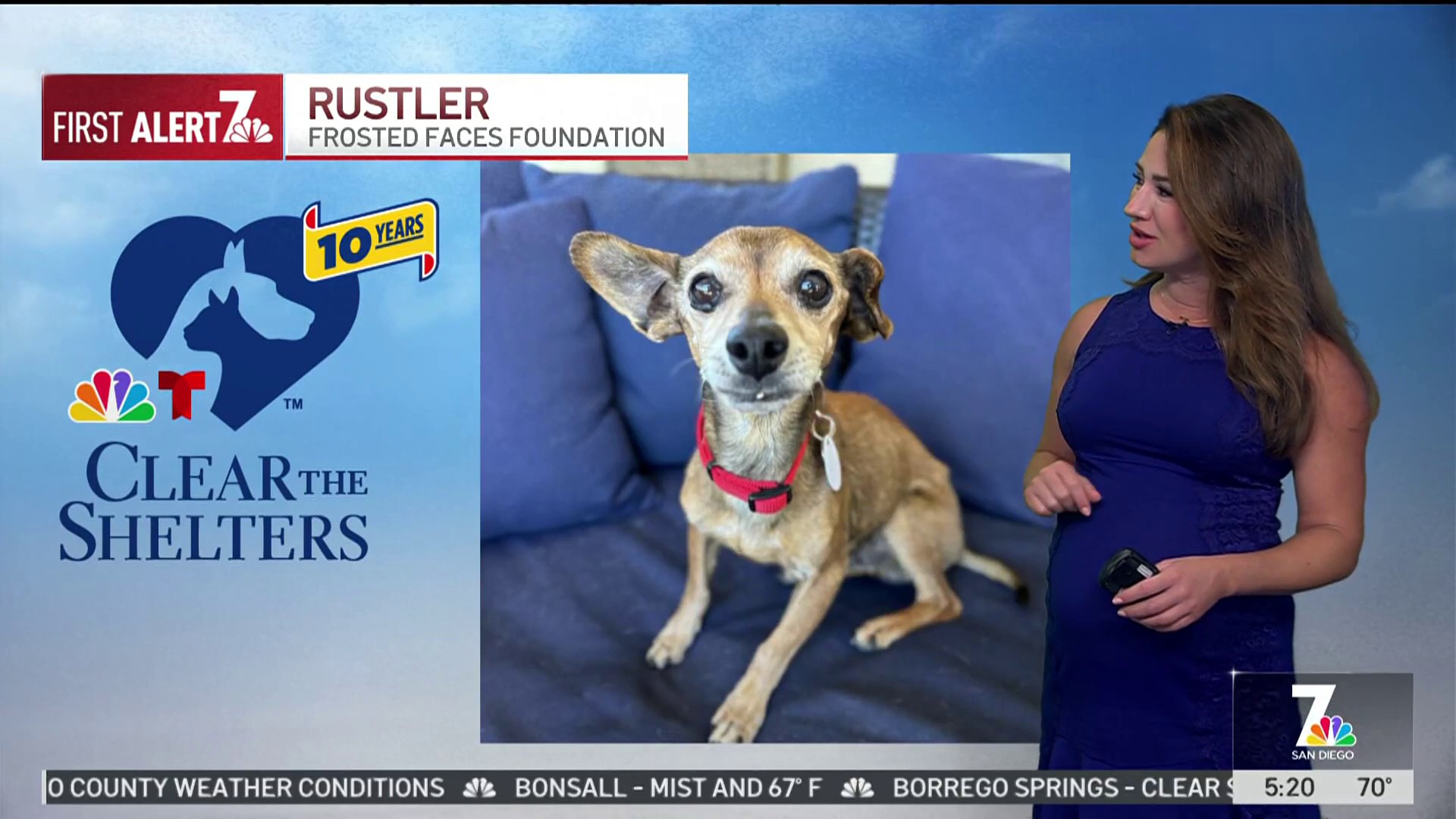
Clear the Shelter's pet of the day, Wed., Sept. 4: Rustler
Przewalski's horses normally live in groups, where a youngster secures their place in the herd from their mother. Because Ollie was born to a domestic horse, he has not yet had experience with other Przewalski's horses.
" Eventually, San Diego Zoo Safari Park wildlife care experts will work to ensure he gains the unique behavioral language he will need to interact and thrive among the larger herd of Przewalski's horses at the Safari Park, including Kurt," a statement from the San Diego Zoo Wildlife Alliance reads. "Kurt is currently learning the language of being a wild horse from his companion, Holly, a young female of his own species. The plan is for Kurt and Ollie to become breeding stallions when they reach maturity at about 4 years of age."
Ollie and his surrogate mother will temporarily live in a secluded, private habitat off view from guests, until he is ready to be introduced to other horses of the species.
Safari Park guests may see Kurt and Holly in the park's Central Asia field habitat.
This article tagged under:
- Give Monthly
- San Diego Zoo
- Safari Park
- Upgraded Experiences
- Plan Your Visit
- Renew/Rejoin
- Conservation
- Take Action
- Adventure Travel
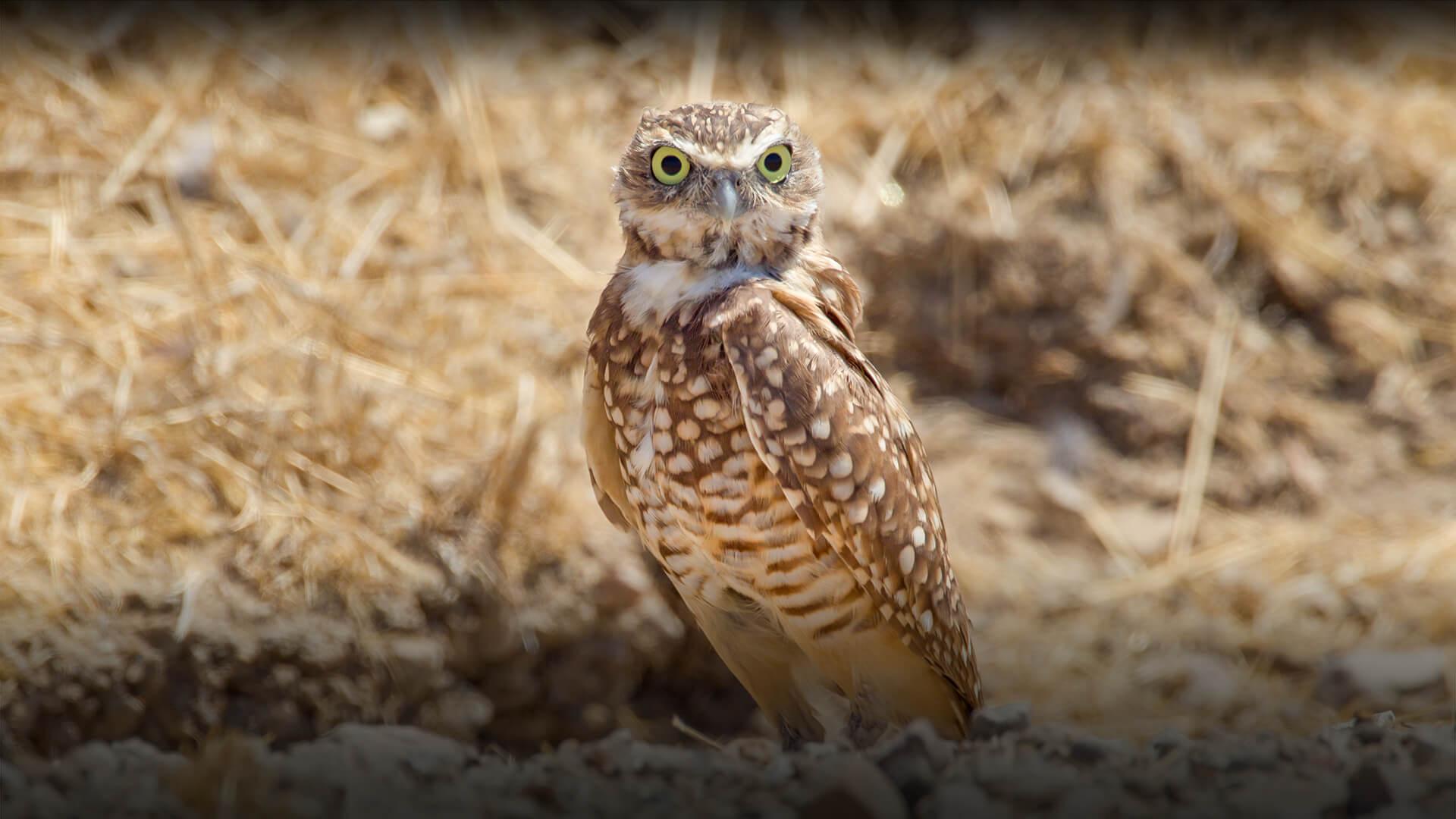
San Diego Zoo Wildlife Alliance is an international, nonprofit conservation organization with two front doors. We integrate wildlife health and care, science, and education to develop sustainable conservation solutions. Conservation is at the heart of everything we do. And it starts with that connection we make with people and wildlife every day. Because when wildlife thrives, all life thrives. Play this video and learn more about San Diego Zoo Wildlife Alliance.
See video credits.
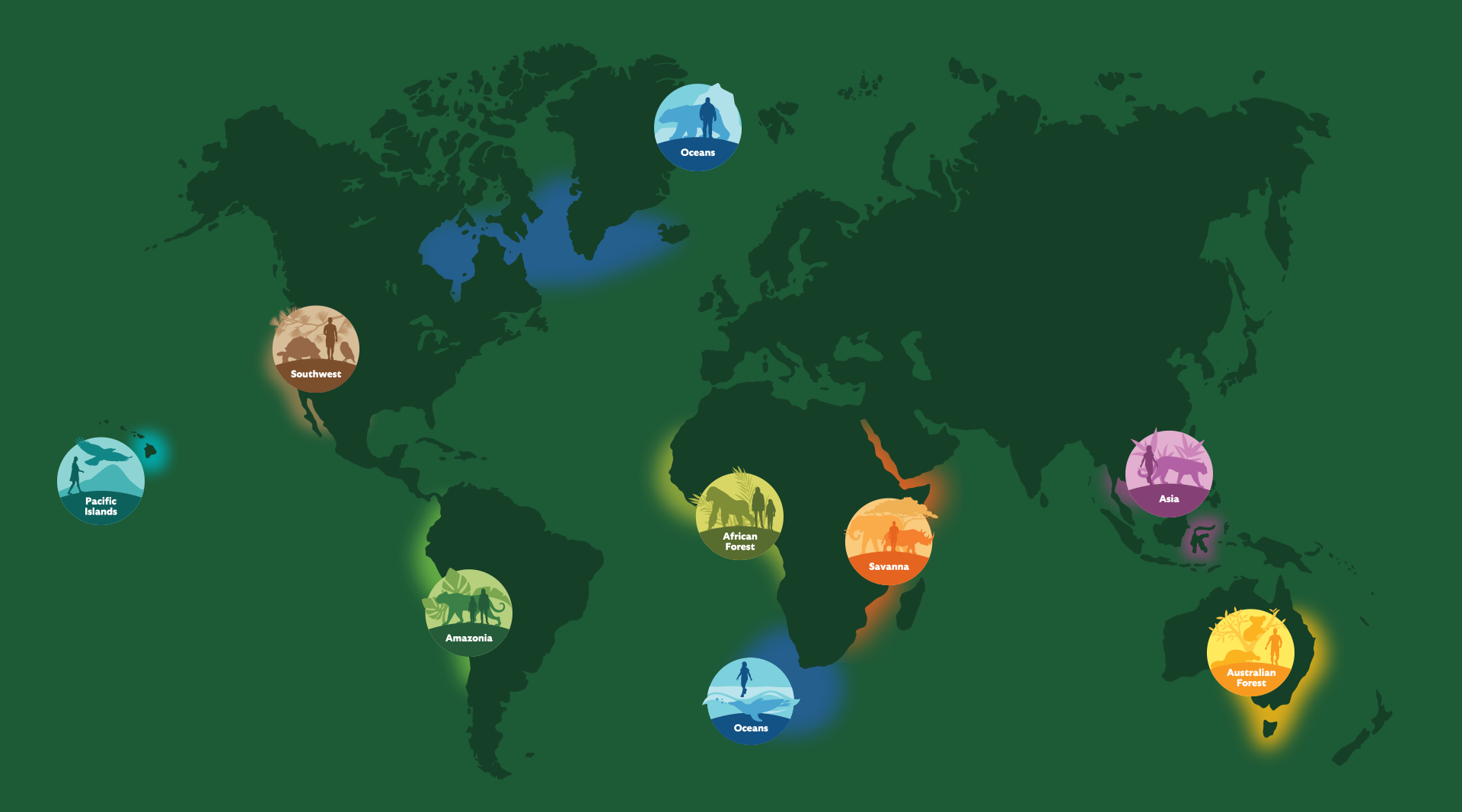
Conservation Worldwide
This map highlights where we focus our conservation work to support wildlife, communities, and ecosystems around the world.
News & Resources
Find in-depth information on Animals & Plants, read about our conservation work in the San Diego Zoo Wildlife Alliance Journal, and explore our blog and media information.
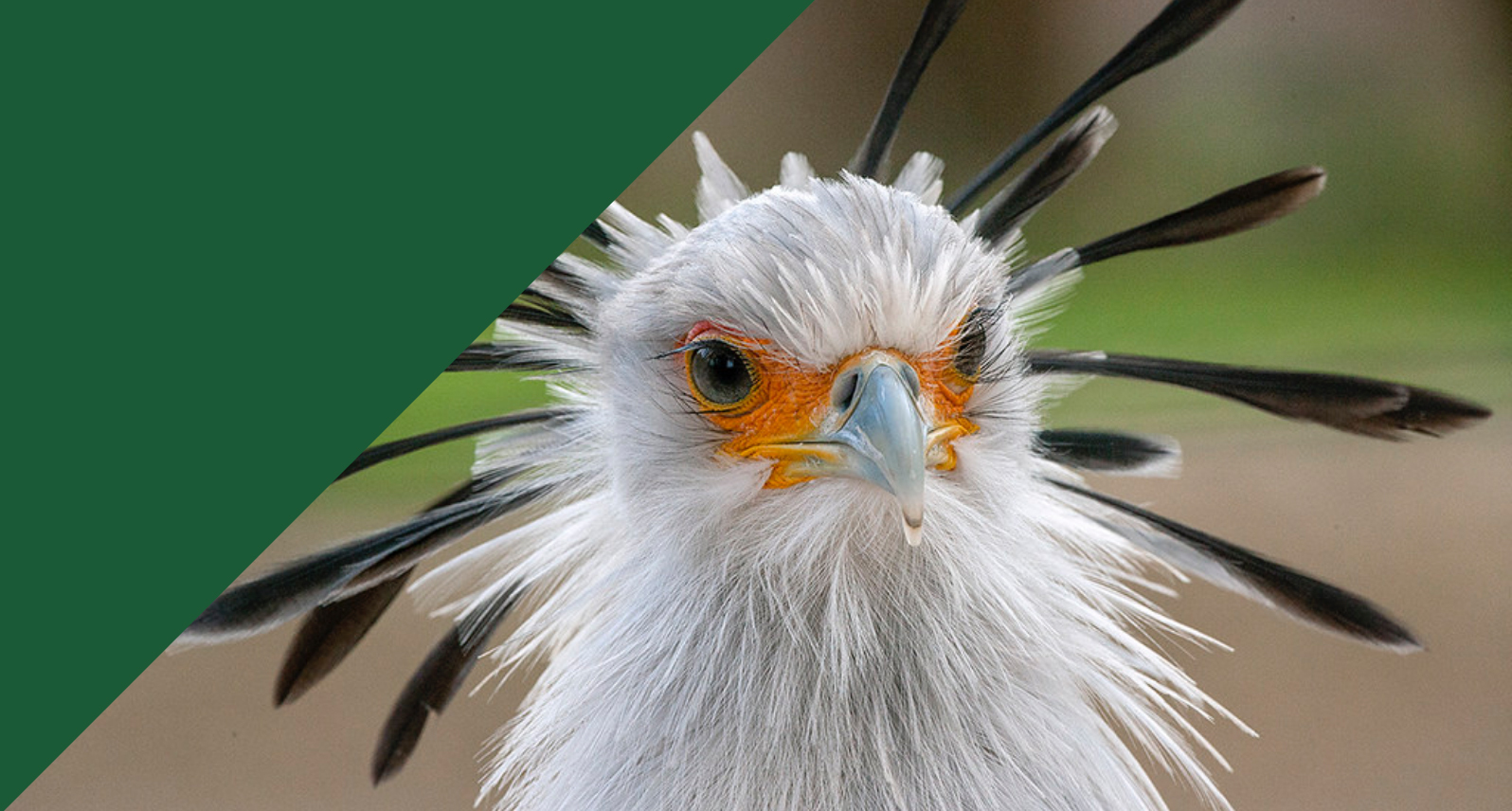
Animals & Plants
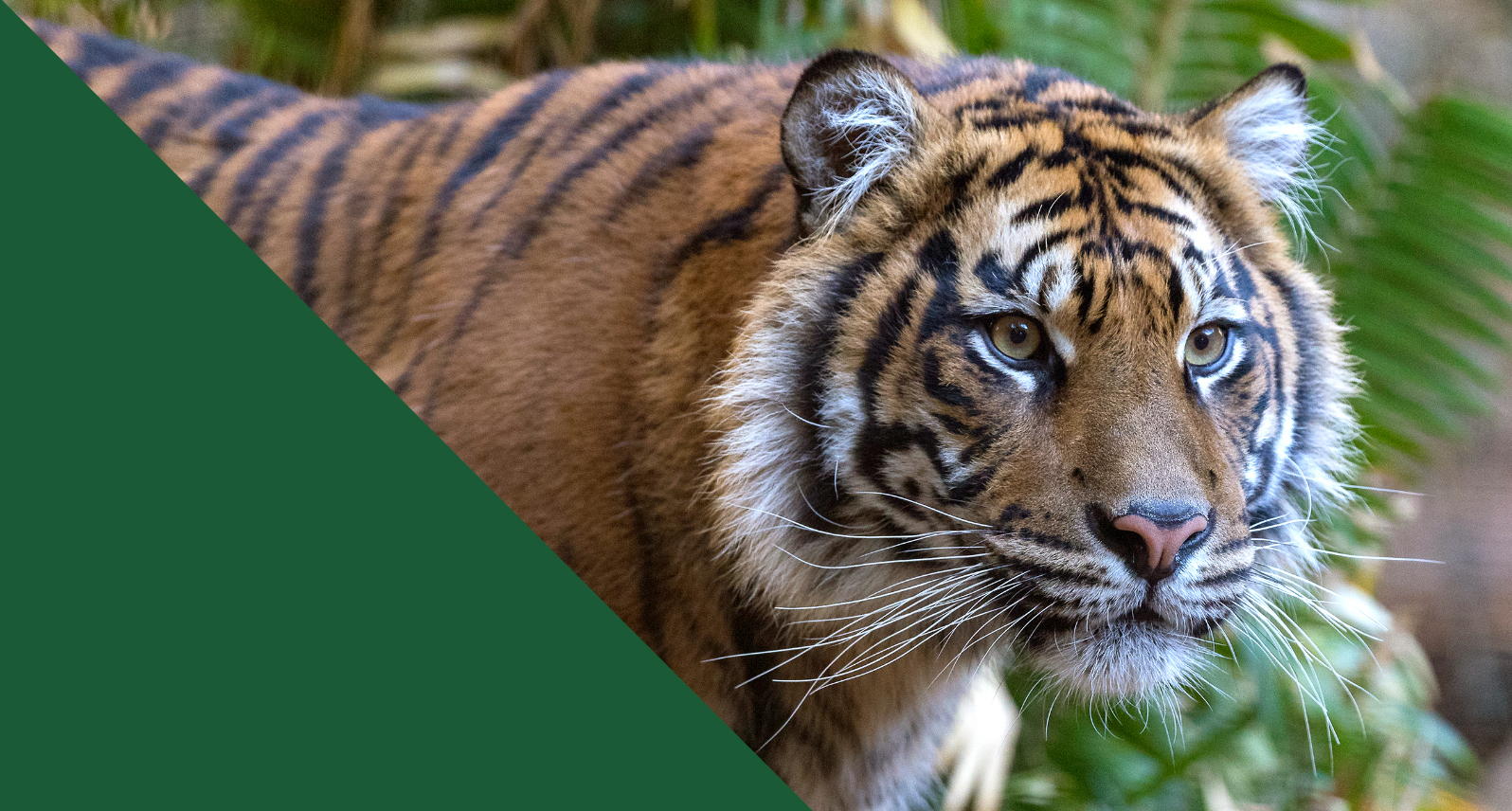
Be a Wildlife Ally
We can't do it alone! Our supporters play a crucial role, and we need dedicated partners like you. Join the San Diego Zoo Wildlife Alliance by becoming a member, help fund conservation projects, volunteer your time and knowledge, or partner with us to sustain conservation efforts worldwide. Your support makes a world of difference.
- Membership ▸
- Donate ▸
- Volunteer ▸
A world of fun and facts for wildlife explorers and teachers awaits on San Diego Zoo Wildlife Explorers. There are great reading options for both youths and adults in the works of San Diego Zoo Wildlife Alliance Press, and many opportunities to explore interactive web-based training courses on Academy. Our Education programs offer a wide range of wildlife experiences, from amazing Summer Camps to learning adventures for all ages—and anyone with a computer or smartphone can join us to make a difference in ongoing conservation work through our Community Science programs.
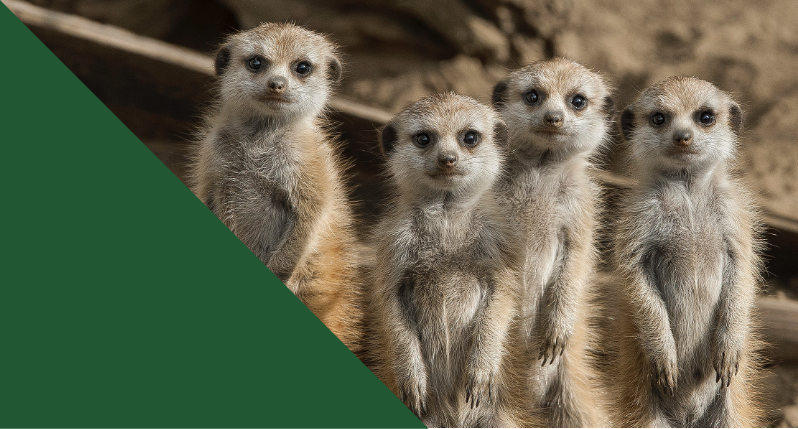
San Diego Zoo Wildlife Explorers
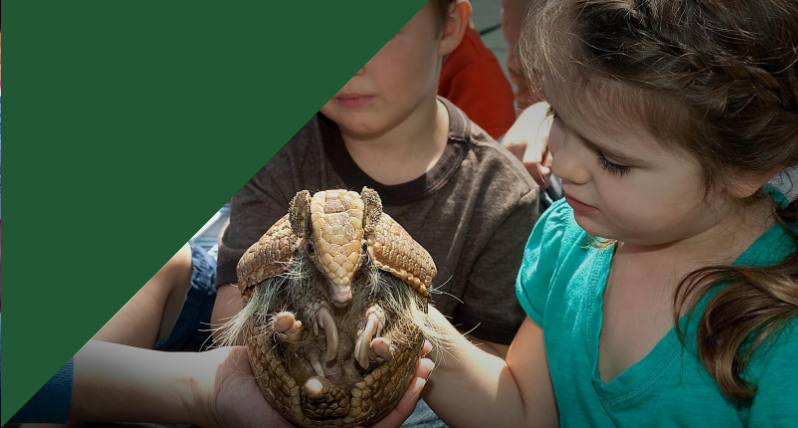
Community Science
- San Diego Zoo Tickets
- Safari Park Tickets

San Diego Bay Private Harbor Tour
Discover the captivating beauty of San Diego Bay with a private harbor tour , a unique opportunity to explore the city’s vibrant marine landscape. Priced at a reasonable $375 for up to six participants, this one-hour excursion promises an immersive experience, showcasing the bay’s iconic landmarks , from the majestic Coronado Bay Bridge to the historic Star of India and the imposing USS Midway Aircraft Carrier Museum. With engaging commentary from a knowledgeable local guide , ample photo opportunities, and the chance to interact with sea lions, this tour offers a well-rounded exploration of San Diego’s thriving waterfront. As you embark on this journey, prepare to be captivated by the bay’s natural wonders and uncover the rich history that lies beneath the surface.

- Exclusive one-hour private harbor tour featuring stunning sights like the Coronado Bay Bridge, Star of India, and USS Midway Aircraft Carrier Museum.
- Opportunities to observe the local Bait Barge and interact with friendly sea lions during the cruise.
- Convenient boarding at the Marina behind the Kona Kai Resort and complimentary sparkling apple cider offered.
- Tour led by a knowledgeable San Diego native guide providing insightful commentary throughout the journey.
- Comprehensive package includes photo opportunities at iconic landmarks and a refund option up to 24 hours in advance.
More tours and experiences nearby.
- San Diego Zoo 1-Day Pass: Any Day Ticket
- San Diego Whale Watching Cruise
- San Diego Hop On Hop Off Trolley Tour
- Skip the Line: USS Midway Museum Admission Ticket in San Diego
Tour Overview and Pricing
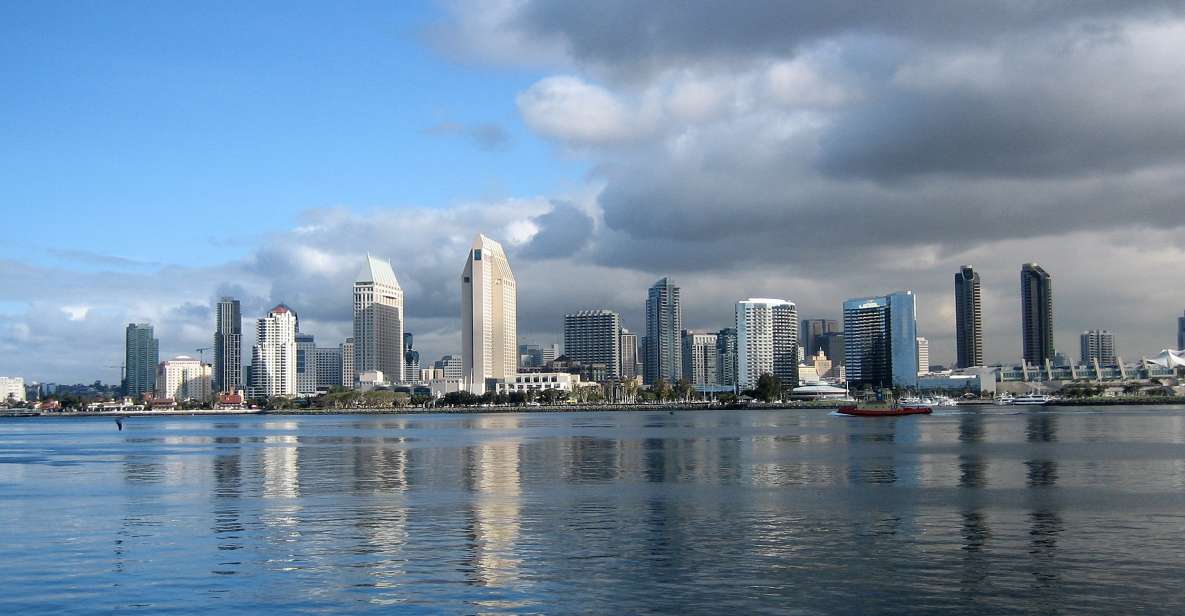
The San Diego Bay Private Harbor Tour offers guests a captivating one-hour excursion through the picturesque waters of San Diego Bay, priced at $375.00 per group (up to 6 participants).
This exclusive tour allows visitors to witness the stunning sights of the Coronado Bay Bridge, the iconic Star of India sailing ship, and the renowned USS Midway Aircraft Carrier Museum. Guests can also observe the lively activity at the local Bait Barge, providing a unique opportunity to interact with the area’s vibrant marine life.
Reservations can be made easily, with the option to pay later and enjoy a full refund up to 24 hours in advance if needed.
This tour promises an unforgettable experience for all who embark on this private harbor exploration.
Itinerary and Highlights

Starting location for this private harbor tour is 1551 Shelter Island Dr suite 108, San Diego, where guests will embark on a captivating journey through the picturesque waters of San Diego Bay .
The tour includes scenic views of the iconic Coronado Bay Bridge , as well as sightseeing the historic Star of India, the world’s oldest active sailing ship.
Plus, you will have the opportunity to observe the USS Midway Aircraft Carrier Museum and the vibrant Bait Barge, known for its local fishing activities.
Guests can look forward to capturing memorable photos under the USS Midway Museum and enjoying close-up views of the San Diego-Coronado Bay Bridge, as well as interacting with the local sea lions .
Experience and Amenities

Accompanying the captivating sights of the San Diego Bay Private Harbor Tour is a well-curated experience, featuring a live tour guide who is a native of San Diego. Guests will have access to the Marina behind the Kona Kai Resort for boarding, where they can embark on the cruise.
During the tour, attendees will be provided with sparkling apple cider, enhancing the overall ambiance and refreshment. On top of that, the excursion offers ample opportunities for participants to capture memorable photographs at various landmarks throughout the journey.
The tour experience also includes:
A knowledgeable guide to provide insights and commentary.
Access to the Marina for convenient boarding.
Sparkling apple cider served during the cruise.
Opportunities to take photos at iconic locations.
Important Information
While the San Diego Bay Private Harbor Tour offers a captivating and immersive experience, it is important to consider certain restrictions and requirements to ensure a safe and enjoyable excursion. The tour is not suitable for individuals with mobility impairments, wheelchair users, or those prone to seasickness. Participants are advised to bring appropriate attire and accessories, such as sunglasses, sun hats, cameras, snacks, sunscreen, water, and binoculars. Plus, a signed waiver is required. To maintain safety and comfort, the tour prohibits unaccompanied minors, drones, alcohol, drugs, and intoxication.
Meeting Point and Directions

Participants for the San Diego Bay Private Harbor Tour are instructed to meet at the bottom of the stairs by the gate to the Marina Entrance behind Vessel Restaurant. Availability for starting times should be checked prior to the scheduled tour.
To ensure a smooth arrival, here are a few important details to note:
The meeting point is located directly behind the Vessel Restaurant, accessible via the stairs leading down to the Marina Entrance.
Guests should arrive at the designated meeting point at least 15 minutes prior to the scheduled tour time to allow for check-in and boarding.
Parking is available in the nearby lots, but participants are encouraged to arrive early to secure a spot.
Once checked in, the tour guide will provide further instructions and lead the group to the boat for the scenic harbor cruise.
Scenic Views and Attractions
The San Diego Bay Private Harbor Tour offers captivating scenic views and highlights of the area’s most iconic maritime attractions.
Cruising along the tranquil waters, guests are treated to close-up encounters with the majestic Coronado Bay Bridge , which spans the mouth of the harbor and serves as a striking backdrop for breathtaking photographs.
Plus, the tour provides an up-close look at the historic Star of India , the world’s oldest active sailing ship, as well as the impressive USS Midway Aircraft Carrier Museum , a must-see destination for military history enthusiasts.
The tour also allows guests to observe the vibrant activity at the Bait Barge , a popular spot for local fishing enthusiasts.
Throughout the journey, participants can interact with the friendly sea lions that call the harbor home, creating an unforgettable experience.
Tour Guide and Boarding
A knowledgeable and personable San Diego native leads the private harbor tour, providing guests with insightful commentary and local expertise throughout the captivating journey.
Participants board the vessel at the easily accessible Marina Entrance behind the Vessel Restaurant, where they are welcomed aboard and invited to settle in for an unforgettable experience on the tranquil waters of San Diego Bay.
The tour offers the following amenities and features:
Access to the private marina behind the Kona Kai Resort for convenient boarding.
Sparkling apple cider served during the cruise to enhance the relaxing ambiance.
Ample opportunities to capture stunning photographs of the iconic landmarks and local marine life.
Engaging interaction with the tour guide, who shares fascinating insights about the history and attractions of the San Diego Bay.
Cruise Inclusions and Policies
The private harbor tour offers a comprehensive package, including scenic views of the Coronado Bay Bridge, a close-up look at the historic Star of India sailing ship, and an opportunity to observe the USS Midway Aircraft Carrier Museum from the water.
Guests will also have a chance to interact with the local sea lions and enjoy sparkling apple cider during the cruise.
The tour is led by a knowledgeable San Diego native guide , providing an insider’s perspective on the city’s landmarks.
However, the tour is not suitable for individuals with mobility issues or those prone to seasickness.
Guests are advised to come prepared with appropriate attire, snacks, and photography equipment to make the most of the experience.
Here's a few more nearby tours and experiences we think you'll like.
- San Diego Whale Watching Tour
- San Diego Seal Tour
- Small-Group Sunset Sailing Experience on San Diego Bay
- San Diego Scenic Tour
- San Diego Harbor Speed Boat Adventure
- Glow Pedal Boat Rental in San Diego Bay! Night Date Idea!
Frequently Asked Questions
Can i bring my own food and drinks on the tour.
According to the information provided, guests are permitted to bring snacks and water with them on the tour. However, alcohol and intoxication are not allowed. It is best to check with the tour operator for any specific restrictions on outside food and beverages.
Is There a Restroom Available During the Cruise?
Yes, there is a restroom available on the vessel during the cruise. The private harbor tour provides access to onboard amenities, ensuring a comfortable and convenient experience for all participants throughout the duration of the tour.
Do I Need to Have Any Special Boating Experience?
No special boating experience is required for this tour. The tour is designed for participants of all skill levels, and the experienced captain will provide all necessary guidance and assistance throughout the cruise. The safety and comfort of guests is the top priority.
Can I Extend the Duration of the Tour?
Yes, you can extend the duration of the private harbor tour. The tour operator offers flexible scheduling and is willing to accommodate requests for longer tours, subject to availability and additional fees. The standard tour duration is 1 hour, but custom arrangements can be made.
How Many People Can Fit on the Boat?
According to the information provided, the San Diego Bay Private Harbor Tour accommodates up to 6 participants per group. The tour is designed for a small, intimate group experience, allowing for personalized service and attention during the one-hour cruise.
Not for you? Here's more of our most recent tour reviews happening neaby
- San Diego: Go City Explorer Pass – Choose 2-7 Attractions
- From San Diego: Tijuana City Guided Tour and Food Tasting
- The San Diego Tour: 3 Hours of Sightseeing
- The San Diego Highlights Tour
- San Diego: Private Surf Lesson
- The La Jolla Tour
- San Diego: Downtown Electric GoCar Rental
- San Diego: Drive Your Own Speed Boat 2-Hour Tour
- San Diego: CityPASS® Save up to 45% at Must-See Attractions
- San Diego: Christmas Eve Buffet Brunch or Dinner Cruise
- San Diego: Point Loma Electric GoCar Rental Tour
- Discover San Diego Together – Family Walking Tour
- San Diego Life at the Beach Tour
- San Diego: Point Loma GPS Self-Guided Tour by Vandherall
- San Diego: Driving Day Tour With Gocar Luxury
The private harbor tour of San Diego Bay provides an exceptional opportunity to experience the city’s scenic waterfront and marine life.
Priced at $375 for up to six participants, the one-hour excursion showcases iconic landmarks, ample photo opportunities, and engaging commentary from a knowledgeable local guide.
With convenient boarding, complimentary sparkling apple cider, and interactions with sea lions, this tour promises a memorable exploration of San Diego’s vibrant harbor.
Similar Posts

Hills Of Athens Walking Tour
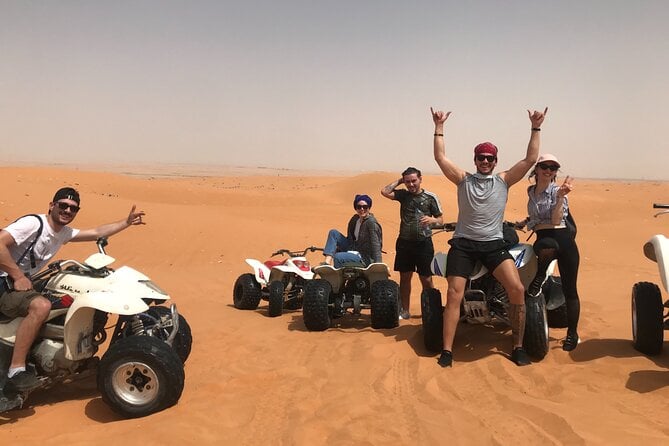
Quad Biking and Camel Riding in Riyadh Desert
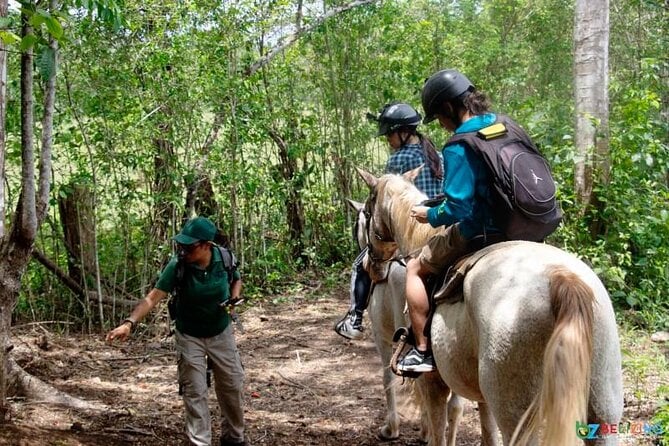
Xunantunich Horseback Riding Tour

Full-Day Private Guided Tour to a Japanese Mountain Near Osaka: Ikoma

Premium Desert Safari 4X4 Pickup & Drop With Dinner & Live Shows

8 Days Private Golden Triangle With Varanasi

San Diego Zoo Wildlife Alliance Timeline
This timeline documents the 100+ year history of San Diego Zoo Wildlife Alliance, from the Zoo’s inception in 1916 after the Panama-California Exposition, to the founding of the Safari Park, and beyond.
*Pardon our dust! Links to archival sources are still being updated.

1916 · 1920 · 1930 · 1940 · 1950 · 1960 · 1970 · 1980 · 1990 · 2000 · 2010

- Drs. Harry Wegeforth , Paul Wegeforth, Fred Baker, Joseph C. Thompson and naturalist Frank Stephens hold their first organizational meeting. 10/02/1916
- One of San Diego Zoo’s first animals arrives: “Caesar” ( photo ), Kodiak bear. 11/1916. Died 9/12/1936.
- Articles of incorporation are submitted to the city, park commission, and state. They are duly executed on 12/11/1916. Dr. Wegeforth is president of the Society. ( Related article ).
- Founding of the “Junior Zoo” by W.H. Porterfield of the San Diego Sun.
- Frank Stephens serves as active director of the Zoo. Society assumes responsibility for care of all animals in Balboa Park. Zoo consists of a line of cages along Park Boulevard.
- A Grizzly bear is incorporated into the Society’s official seal. (Used until 1955 and was changed because the Grizzly became extinct in California.) 2/17/1917
- Jack Hendee appointed first superintendent. 5/11/1917
- First lion cubs born; “Faith”, “Hope”, and “Charity”. 9/17/1917
- Zoo membership is available at $5 per membership.
- Society enters legal agreement with City of San Diego transferring ownership of all animals, equipment and property to the City in return for jurisdiction over a permanent zoo site (not yet designated).
- First pair of zoo-born lion cubs are sold to the city of Seattle.
Return to Top

- Pits are built for the bears along Park Boulevard (across from Indian Village). Completed with cement floors in 1921 with funds from the City Council.
- Standard Oil Company and Combined Harvester Company donate their Exposition buildings to the Zoo.
- First organized membership campaign carried on during last months of the year.
- Zoo’s current site is approved by Board of Park Commissioners (140 acres). Nathanial Slaymaker, city planner, draws up plans. Ellen Browning Scripps donates $9,000 for fence. Formal dedication is held. Fall/1921
- First staff hired: John L. Bacon, engineer; T.N. Faulconer, secretary; Benjamin F. Tyler, legal counsel; N.E. Slaymaker, landscape architect; L.J. Gill, architect; Robert Mears, superintendent of animals; W.H. Raymenton, director of gardens; G.E. Chase, director of works.
- Lower Otay Dam is sited in the canyon north of the Reptile House . The lake that results housed aquatic birds and fresh water fish.
- Barrett Dam is constructed to create a pool for seals ; Morena Dam creates a pool for alligators.
- Architect Louis J. Gill redesigns the International Harvester Building from the Panama Exposition to serve as Reptile House and Zoo entry. Finished 4/1922.
- First curator of reptiles is Laurence M. Klauber (President of SDG&E and consultant to the Society); serves until 1931.
- First Guadalupe fur seals arrive. (First live specimens to arrive in the United States. Brought from Baja by a local fisherman.) “Mrs. Silvergate”, another Guadalupe fur seal, washes ashore at Ocean Beach and is added to the collection. 4/30/1922. Article cites early conservation efforts.
- First cage that will house an African leopard is donated by the Hotel-Men’s Association. 7/14/1922.
- Barless animal grottos (Related article).
- Zoo’s grand opening: 10 cent admission for adult non-members. Children free. Entrance is through the Reptile House (the International Harvester Building from the 1915-1916 Exposition). 1/1/1923.
- Intense development of zoo infrastructure, mission and collection. ( Related article ).
- First lion grotto constructed: “ Prince “, “Julia”, and “Sara” have a new home thanks to Ellen B. Scripps’ donation. 4/1923 (Demolished in 1999 to build Douc Langur enclosure.)
- First Asian elephants, “ Empress ” and “Queenie”, arrive from Bombay Lumber Co., via Frank Buck. Dr. Wegeforth and Harry Edwards ride the elephants from the Santa Fe Depot to the Zoo. 5/20/1923
- Frank Buck, “Bring ’em back alive”, signs a three-year contract as Zoo director. Three months later he is fired and sues the Zoo. 6/13/1923
- Tom Faulconer (Park Board secretary) accepts the Directorship of the Zoo. 6/13/1923.
- Two dromedary camels (one hump), “Turk” and “Scar”, received from the Lasky Film Corp. One Bactrian camel, “Dick”, received from Ringling Circus. 6/24/1923
- First elephant seal arrives. 7/20/1923
- Scripps’ flight cage for shore and wading birds (then the tallest in the world: 82′ high, 150′ long, 74’3″ wide at one end and 62′ at the other). Built at a cost of $15,000. Located on the south side of Primate Mesa. Dedicated 9/8/1923. ( photo )
- Mr. & Mrs. P.F. O’Rourke purchase the Nevada State Building. They pay to move it and the Standard Oil Building to Zoo grounds for use as the Children’s Education Center and Junior Zoological Society departments. Planned completion is Christmas, 1923.
- First American alligators in the Zoo, donated by General Terry.
- First Malayan sun bear on exhibit, “Sunny”. 12/02/1923
- Free elephant rides for children begin on New Year’s Day. Discontinued 2/17/1924.
- Tibetan yaks arrive. 1/20/1924
- Camels “Turk” and “Scar” give birth to “Sheik.”
- First column of Zoonooz appears in the San Diego Sun, written by W.B. France.
- Harry Wegeforth organizes other zoo directors to exchange information and animals. The organization is called the National Association of Zoological Executives. It is an affiliate of the American Institute of Park Directors and eventually becomes AAZPA in 1966 (a branch of the National Recreation and Park Association). 4/16/1924
- Zoo expands to 150 acres.
- New Bear Grotto completed; houses 5 bears—Kodiak, Black bear, Cinnamon, Himalayan and Malayan Sun bear. Funded by Ellen B. Scripps . 7/20/1924 ( Related article ).
- First Leopard Grotto completed. Home to “Sappho” and “St. Elmo”. Financed by John Burnham. 8/1924
- Double Tiger Grotto constructed. First exhibit of Sumatran tigers. Gift of Ellen B. Scripps. Ground breaking 8/28/1924, completed 11/23/1924.
- First chimpanzees “Nina” and “Bondo” arrive as gifts from Ralph Granger. 3/24/1924
- First concession stand run by Maude R. Scott on July 4th.
- First snake roundup – $100 in prizes awarded for capturing snakes for the Zoo.
- John Spreckles finances a trip to Australia for Zoo Director Tom Faulconer. Koalas “Snugglepot” and “Cuddlepie” are presented as gifts to the children of San Diego from the children of Sydney. (Marks the first foreign exchange. Other animals include: 40 kangaroos, 6 emus, wombats, dingoes, phalangers, birds of paradise, and an echidna.) 1/28/1925
- “King Tut”, a salmon-crested (Moluccan) cockatoo, arrives in San Diego 5/25/1925 via Frank Buck. Named official greeter 2/19/1951. Dies in 1990.
- Belle Benchley hired as temporary bookkeeper. 10/19/1925.
- “Sally”, a Cinnamon bear ( Ursus americanus ), is flown from Rifle, Colorado to San Diego Zoo. Touted as “First Bear to Fly.”
- First issue of Zoonooz published by the San Diego Zoo. W.B. France grants Zoo the full title to the palindrome coined for his newspaper copy. 10 cents a copy, free to members. Jan/Feb/1926
- “Sheik” the camel stars in a Hollywood movie “Beau Geste”. Also appeared in “Ben Hur”. ( photo ).
- First 2 buses (Model T made by Powell Motor Co.) donated by Miss Anne Zimmerman (retired school teacher) to transport underprivileged children to the Zoo. She also suggests giving one-hour tours on weekends and holidays for 25 cent fee. ( photo ).
- 4 large artificial rock cliffs are constructed for mountain goats on Deer Mesa.
- Flood results in first major escape (a tiger, mountain lion, and California sea lions). The enclosures cave in when heavy rains wash out the Zoo’s dams and canyon grottoes. California sea lions invade the San Diego Sun’s offices and the San Diego Police station. 4/25/1926
- Zoo received special appropriation from the City.
- P.F. O’Rourke resigns from Board of Directors. Denies gift of building to the Society and incorporates his own institution. (Related article).
- $50,000 donated by Ellen B. Scripps for research hospital. Building is begun. Completed in 1927.
- Second unit of Deer Paddocks finished.
- South Gate opened. Entrance fee is raised from 10 cents to 25 cents. All servicemen in uniform admitted for free.
- Hospital and Biological Research Institute designed by Louis J. Gill and funded by Ellen B. Scripps is dedicated. Dr. Abart takes over animal care from city veterinarian, Dr. Foelschow, who previously donated his services. 4/17/1927
- Board adopts operating practice used by London Zoo: Executive Secretary working under Board of Directors.
- Belle J. Benchley is appointed Executive Secretary with control of operations. July/1927. ( photo ).
- The sailing ship “Star of India” is donated by James W. Coffroth to the Zoological Society for a maritime museum and first unit of a proposed aquarium. ( Related article ).
- Second Australian expedition successfully completed.
- South Gate opened.
- Warehouse burns but all building are insured.
- Elk Lodge donates money for a large elk pasturage.
- Pools cemented.
- Large parrot cage built. Peccary pen and warthog pens built.
- S.C. Charles is hired as keeper and first trainer for sea lions. Johnny Zolezzi supplies the Zoo with sea lions for $25 each (a quarter of the average price). The Society uses this resource to financially assure the Zoo’s survival. Shows begin.
- First black forest cobra “Old Black” on exhibit; lived at Zoo for 29 years, still holds the longevity record in captivity.
- 30 Galapagos tortoises exhibited at the Zoo. 180 collected by Dr. Charles Townsend of the New York Aquarium from the south of Isla Isabela in the Galapagos Archipelago. ( photo ).
- “ Maggie ” and “ Jiggs ” (two young orangs) arrive from Asia.
- Second warehouse and implement shed built.
- Elephant pool built.
- First California condor donated to Zoo by Mr. & Mrs. Keith Spalding (bird was discovered with a crippled wing on Rancho Sespe).
- First Andean condor, “Bum”, arrives from Hazenbeck, Germany. 6/9/1929
- First Electus parrot, “Sassy Susie”, at the Society and in the U.S. ( Related article ).
- Birth of Bengal tiger triplets . 11/28/1929

- “ Queenie ” the elephant radio interview – KFSD. 11/01/1930.
- Collection expands via importing animals and successful breeding ( Related article ).
- Housing, cages and grottos expand and modernize
- Expedition to Guadalupe . ( Related article ).
- First collecting trip to the Galapagos Islands. A female and a baby fur seal are brought back. First captive birth is in 1934.
- First gorillas arrive. “ Mbongo ” and “N’gagi” captured by Martin and Osa Johnson. Although the purpose of capture was “scientific study and breeding”, both were found to be males. ($11,000 donated by Ellen Scripps Browning and Robert P. Scripps.) 10/5/1931. ( Related article ).
- Expeditions; collection expansion; diplomacy ( Related article ).
- Dr. Schroeder employed as Zoo veterinarian / pathologist (1932-1937). He serves as veterinarian for the Bronx Zoo in 1938 but returns in 1939. Second tenure: 1939-1941 . Becomes Zoo Director in 1954 .
- First Binturong, “Benny”, born in captivity. 7/01/1932.
- County Assessor taxes the Zoo $100,000 and attempts to sell animals and property at auction when Zoo defaults. With no bidders the Zoo is declared the property of the State. The State refuses to accept and City Council declares the auction illegal.
- First Mangabey birth at the Zoo.
- Galapagos penguins arrive and spend their first spring inside the Reptile House for warmth. ( Related article ). ( photo )
- Mirror pool donated by Anne Zimmerman , penguin group is displayed.
- First amphibian joins the collection, a giant marine toad. Collected by C.B. Perkins.
- City of San Diego passes a proposition that allows the Zoo to receive 2 cents from every $100 collected in property taxes.
- A family of four sloth bears arrive from Brazil. 6/25/1934
- First Baird’s tapir, “Mickey” – a female, arrives from Ecuador. 7/04/1934
- For a map of the zoo, c. 1934, click here .
- Milton Leeper hired as Zoo’s first garden supervisor.
- Pribilof fur seal arrives.
- Expidition to bring two Northern Elephant seals from Guadalupe Island, Mexico to the San Diego zoo. Research and conservation. ( Related article ).
- First recorded animal death from Coccidioidomycosis (a fungal disease) – a tropical American monkey. This is the same disease that kills Mbongo in 1942 .
- Grizzly bears born. 1/08/1936.
- First Galapagos albatross. 1/20/1936
- First Gray mangabey for the Zoo and first for the U.S.
- First Babirusa and first Sambar deer. June/1936
- Construction begun on new Reptile House (still in use) and Elephant Barn. International Harvester Building becomes a cafe.
- Wegeforth Bowl and Fern Canyon landscaping begun (WPA Projects).
- “Puddles” the hippo (born at the Brookfield Zoo 7/8/1935) arrives. First time a hippo is exhibited in a Pacific Coast zoo. 8/19/1936
- A second flight cage , originally called “the Great Eagle cage”, is built to house birds of prey on the north side of Primate Mesa. It is the world’s largest bird cage of its time. (This aviary is later expanded and converted to a walk-through tropical rain forest aviary .) Dedicated 03/07/1937
- Reptile Mesa is completed with outdoor pits, a Galapagos tortoise enclosure, land tortoise pens and pools for alligators and crocs.
- First emu hatching.
- Two giraffes arrive, “Lofty” and “Patches”.
- First zoo concessions manager hired.
- First spectacled bears received. 3/11/1938
- Zoo begins collaborative education program with San Diego schools.

- First cheetah arrives, “Bong”.
- Hippos “Rube” and “Rubie” arrive.
- Belle Benchley publishes My Life in a Man Made Jungle .
- First Bornean orangutan arrives, “Bujang”.
- First Zoo lectures, “ Caesar, the Kodiak bear “, by Commander J.C. Thompson.
- First Lesser pandas arrive, reproduce in 1941.
- First De Brazza’s guenons arrive. First offspring June/1945.
- First Zoo summer school program is begun.
- Dr. Harry Wegeforth dies at the age of 59. (1/07/1882 – 6/25/1941)
- Dr. Charles Schroeder resigns at the Zoo’s Veterinary Pathologist to become assistant Director to the Veterinary Department of Lederle Lab (4/15/1941). Returns to Zoo as Director in 1954 .
- Dr. Frank D. McKenney takes over from Dr. Charles Schroeder as Zoo’s Veterinary Pathologist. 6/1941
- WWII: Zoo plants its own vegetables in Mission Valley to save money during the war years.
- First number drawn by Selective Services belongs to a young Zoo employee, Howard Lee. The publicity given Lee’s leaving his job was carried all over the world.
- First jungle fowl turned loose in the Zoo.
- First Andean condor hatched in captivity in U.S. [First in the world in 1939 at the Royal Zoological Society in Amsterdam.] 7/08/1942
- Mbongo , one of two gorillas who arrived in 1931, dies from Coccidioides immitis, a fungal infection.
- First hippo born at the Zoo – “Rubie” gives birth to “Lotus”. 10/30/1943.
- First captive bred cobra hatches at the Zoo.
- Radio station KSDJ and the San Diego Zoo begin a series of Tuesday evening shows called “Animal Kingdom”, featuring brief and unrehearsed discussions of natural history. (Zoo participants are Jacqueline Schermerhorn, C.B. Perkins, and Ken Stott.)
- New birds at the Zoo: Paradise rifle birds, quetzals, ocellated turkeys.
- New mammals at the Zoo: Blesbuck, Greater kudu, Bennett’s wallaby, white-headed saki
- First artificial insemination of ocellated turkey in the U.S., fourteen hatched.
- First captive breeding of the Aruba Island rattlesnake.
- Giant salamander “Hon Honsaki” arrives from Japan; grows to be 5′ long.
- New birds at the Zoo: Burmeister’s cariama and a pair of crested screamers.
- Construction of new buffalo enclosure: one section for African water buffaloes and another for American bison. Old Buffalo Pastures are remodeled for moose (first time at the Zoo).
- New flamingo pool built in corner of Zoo.
- A dam is constructed across the lower drainage basin. The reservoir holds approximately 500,000 gallons of water and is used for irrigation purposes.
- Balboa Park miniature railroad opens near Zoo entrance. Half mile ride costs 9 cents for children, 15 cents for adults. 11/13/1948
- “Albert”, “Bouba”, and “Bata” arrive; first time three gorillas are raised together. 8/10/1949
- First snow fall in San Diego in 99 years; coincides with arrival of first snow leopards (one dies shortly after arrival due to a parasitic infection). Believed to be only snow leopard in captivity. 1/21/1949
- Belle Benchley begins term as AAZPA president, 1949-1950.

- First Dr. Harry Wegeforth Day, admission is free! After 1955, known as “Founder’s Day”. 10/01/1950
- Public Relations department established at the Zoo.
- First captive breeding of Northern fur seal.
- First zoo hatching of Florida sandhill crane.
- Terracing and construction of retaining wall in the Small Mammal Canyon.
- “ King Tut “, a salmon-crested cockatoo, is donated by Mrs. I.D. Putnam of La Mesa and named Official Greeter. 2/19/1951
- “Behind the Scenes at the Zoo”, KFMB weekly television program, begins airing. 9/22/1951
- First Hawaiian monk seal to enter and be exhibited in the Continental U.S. (died same year).
- Four koala arrive from Sydney (on loan to Paramount Studios for their film “Botany Bay”); later gifted to the Zoo by NSW
- First black rhinoceros “Sally” (born in Kenya 1950), arrives from East Africa.
- 10 new cages for Bird of paradise exhibit.
- First tuatara arrives from New Zealand. San Diego, Brookfield, Bronx, and London Zoos each receive one reptile. 11/02/1952
- Belle Benchley ‘s last day as managing director, retires after 26 years . Designated by City and County as “Belle J. Benchley Day”. Testimonial dinner at Balboa Park Club. 12/10/1953
- George Pournelle is hired as Curator of Mammals. Serves until his death. 9/01/1972
- Dr. Charles Schroeder (veterinarian/pathologist who began at the Zoo in 1932 ), assumes directorship and serves for 19 years until 1972 . 1/01/1954
- International Harvester Building from 1915 Exposition is torn down and replaced by a new entrance. A restaurant is on the right and administration building on the left. Turnstiles are installed. (Donald W. Campbell architect) 5/22/1954
- Mirror Pool is replaced by new dryer Flamingo Lagoon. New home to 22 American and Chilean flamingos. Formal dedication 7/28/1954.
- First captive breeding of Spectacled langurs and South American bush dogs.
- First Kiwi arrives from New Zealand (only one in the Western Hemisphere). 12/08/1954
- First two-headed snake exhibited in San Diego County, a banded C. King snake, “Dudley Duplex”.
- City Council allocates 2 additional acres of Balboa Park land for proposed Children’s Zoo. 10/18/1954.
- Zoorama, first San Diego Zoo live television show, begins weekly production. 1/09/1955
- New corporate seal is designed by L.J. Schwenkenmeyer for the Society. The Northern elephant seal replaces the California grizzly bear corporate seal (in use since 1917). 1/1955
- Tasmanian devils arrive from Sydney, Australia. 7/1955
- First formal horticulturist, Timothy Aller, is hired.
- City Parks & Recreation Department grants the zoo an additional 1.5 acres for the location of the Children’s Zoo
- First Okapi arrives, gift from Belgian government in the Congo. 11/27/1956
- A pair of proboscis monkeys are received from Indonesia, first to be successfully exhibited in the Western Hemisphere. 1/08/1956
- Zoo takes its first safari through Central and East Africa.
- Tasmanian devil grotto is dedicated. 7/15/1956
- New bus station for guided tours.
- First mud-mound nests built by flamingos
- Zoological Society is granted IUCN membership
- First captive hatching of Cassowaries at the Zoo (also first in U.S.) 4/1957
- First flamingo chick hatched
- $150,000 raised for Children’s Zoo. Design coordinator is Lloyd Ruocco, assisted by Charles Faust & Bil Noonan. Opens 6/30/1957.
- New Zoo exit breezeway and gift shop. 2/09/1957
- New animals: Emperor penguins, reticulated giraffe, Chinese alligator, flying snake, Hawaiian monk seal
- First successful captive breeding of Kea at the Zoo (also first in U.S.) 5/1958
- First Galapagos tortoise eggs (5) are discovered in their incubator. The eggs laid 2/16/1958; hatched 10/21/1958.
- Penguin Pavilion opens. 7/1958
- Scripps flight cage is transformed into a walk-through exhibit for shore and wading birds. New dimensions: 80′ wide, 95′ high, 115′ long.
- Wegeforth Bowl remodel and addition of semi-circular pool.
- Zoo receives the San Diego Zoo Convention & Tourist Bureau’s first tourism award.
- Zoo receives 4 koalas (1 male, 2 females, and 1 joey in pouch) from NSW to establish a breeding colony. Installation of sanctuary and exhibit area.
- Zoo receives two rare Kagus of New Caledonia listed in Extinct and Vanishing Birds of the World from the U.S. Navy.
- Dr. Schroeder begins term as AAZPA president.
- Clark Children’s Theater added to the Children’s Zoo.
- Toucan cage, Lath House, Turtletorium, 3-faced clock, sun dial, and stylized dual drinking fountain added to Children’s Zoo.
- Construction of combination seal pool and dining terraces.
- Conversion of Birds of paradise cages into walk-through exhibit.
- Renovation of all enclosures in Stork and Crane Canyon.

- Remodel of tortoise enclosure (5 Aldabra and 21 Galapagos).
- Remodel of Harbor seal and elephant seal pools.
- Five (5) hippos are moved from Elephant Mesa to new pools at bottom of Stork and Crane Canyon.
- Iceberg-style Polar Bear Grotto opens. First inhabitants are “Frieda”, “Hilda”, and “Olaf” from Norway. Exhibit includes diving platform and slide. 12/03/1960
- First koala birth in North America.
- First rare Bonobo arrives from Africa, “Kakowet”. (Died 8/24/1980 a few months before his 21st birthday.) 12/1960
- Zoo receives the AAZPA Edward Bean Award for first koala birth in Western Hemisphere.
- First hatching in the Western Hemisphere of a Kookaburra. 4/11/1961
- First Hawaiian geese arrive. 11/27/1961
- Catch Basin created in 1948 is converted to Waterfowl Lagoon.
- “Acoustiguide” 40-minute tape-recorded commentary is introduced. 12/23/1962
- First Okapi born at Zoo. “Baruti” is 4th Okapi born in U.S. 2/8/1962
- Formal opening of new and renovated exhibits on Ape and Bird Mesa. “Vila”, “Chuck”, “Trib” and “Yula” occupy one enclosure, “Albert”, “Bata”, and “Bouba” occupy another in the new Gorilla Grotto designed by Charles Faust. 6/08/1962.
- Zoo hosts 17th annual meeting of the International Union of Directors of Zoological Parks. 9/30/1962-10/05/1962
- Ape Grotto constructed between large flight cage for shore and wading birds and smaller enclosures for birds of prey. Renovation of cages for Gallinaceous birds and construction of 34 new small aviaries. Architect Charles Faust.
- Zoo receives 2 rare square-lipped White rhinos from the Natal Parks Game and Fish Preservation Board (only 600 individuals remain). 9/08/1962
- First Siberian tigers arrive. 9/11/1962
- Giraffe enclosure (moated parabola with a 1,600 sq.ft. building and two exhibit yards) is completed on Horn & Hoof Mesa. Architect Homer Delawie; Contractors Callahan Brothers. 12/1962
- “Lasai”, an Indian rhinoceros, arrives at the Zoo.
- First Gila monster conceived and hatched in captivity. Received Bean Award. 11/1963.
- Edward H. Bean Award for Galapagos tortoise births.
- Conversion of all exhibits on Large Mammal Mesa to moated enclosures for elephants and rhinos. New elephant house.
- Zoo receives a pair of Komodo dragons from Surabaja, Java. 8/14/1963
- The Zoological Society and the Malagasy government establish a Lemur conservation program at the Zoo.
- Zoo receives AAZPA Bean Award for hatching and rearing of rhinoceros iguana.
- Hummingbird Aviary opens. Designed by Charles Faust. 10/2/1964
- More than 50 construction projects completed: Tapir enclosure, incubator room in Bird Yard, Okapi enclosure extension, Orang and Chimp Grotto, Kiwi exhibit, renovated cat cages, fences replaced by moats on Horn and Hoof Mesa and Flamingo exhibit.
- Zoo raises price to $7.50 per membership.
- Wegeforth Bowl’s “Mickey” stars in the Walt Disney movie “Sammy the Way Out Seal”.
- First Lowland gorilla “Alvila” is born, 16 years after “Albert” arrives; 7th Lowland gorilla born in captivity in the world. 6/03/1965
- First Fijian banded iguanas at the Zoo.
- First time any zoo has been awarded 3 Edward H. Bean Awards for the “Most Notable Animal Births in an American Zoo”: Reptiles (African soft-shelled tortoise, first hatching recorded in captivity), Birds (Thick-billed parrots, first recorded hatched in captivity, 09/08/1965), Mammals (first Proboscis monkey birth outside its native country of Borneo, 10/12/1965). Award presented on 10/13/1966.
- 2 moated islands with playgrounds for Gibbons and Siamangs are constructed along with 5 Baboon enclosures in Old Ape Alley.
- Zoo raises price to $10.00 per membership.
- “African Plains” exhibits are created on Horn and Hoof Mesa.
- Great Ape Grotto completed.
- “Boo Boo” (female Sun bear) is discharged from the U.S. Navy and officially takes up residence in the Children’s Zoo. 12/29/1965
- A small scale model of the Elephant Enclosure opens in Children’s Zoo. 2/17/1966.
- First Gold Elephant Seal Conservation medals are awarded at AAZPA conference in San Diego (to Jean Delacour, Edward Hallstrom and Fairfield Osborn). 2/1966
- First 2 female Przewalski’s horses arrive from Catskill Game Farm in New York. 6/1966.
- First Pygmy chimpanzee birth in the U.S. “Linette”. 8/08/1966
- 6 more Gold Elephant Seal Conservation medals awarded (Harold Coolidge, Majian Grimwood, Dr. Boonsong Lekagul, Perez Olindo, Ian Player and Peter M. Scott). Fall/1966
- Zoo hosts landmark world conference on “The Role of Zoos in International Conservation of Wild Animals”. Charles Faust designs condor pin for all participants. 10/1966
- Elmer Otto Center dedicated, Zoo’s 50th birthday. 12/02/1966
- Seven zoo keepers (Dick Sweeney, Gerald “Red” Thomas, Conrad Grayson, Dennis Melvin, Ken Willingham, Carl Pyle and Walt Bromley) begin the San Diego Zoo Keepers’ Association (which eventually becomes AAZK). 12/16/1967
- First wattled cranes arrive. 4/13/1967
- Nursery for Galapagos tortoises is formally dedicated. 4/23/1968
- First U.S. breeding of Superb bird of paradise. Born 6/24/1968; Died 11/20/1973.
- Douc langurs arrive. 6/26/1968
- Skyfari groundbreaking. 10/11/1968
- Inauguration of Skyfari aerial tram, spans approximately 1,800′ of Zoo canyons and mesas. 3/20/1969
- First Przewalski’s horse born, “Bolinda”. 4/08/1969
- New kiwi enclosure (first SDZ nocturnal exhibit) dedicated. 6/18/1969
- First year with 3 million attendance. Admission is $1.50 for adults, kids free.
- Zoo increases membership cost to $12.50.
- Society president Anderson Borthwick signs agreement with Mayor Frank Curran to establish wildlife preserve on San Diego City land. Ground breaking for development of 1,800 acres leased by the San Diego Zoo for development of a “natural environment zoo” in San Pasqual. 5/14/1969

- Joan Embery, Children’s Zoo attendant, is announced as the second Miss “Zoofari”. 2/17/1970
- First Russian saigas arrive. 11/1970
- Wild Animal Park receives South African sable antelope (1/15/1970), greater kudu (1/13/1970), and first gemsbok (1/14/1970).
- San Diego community votes on Wild Animal Park plan. $6 million bond issue is approved by 75.9% of voters. 11/30/1970
- Dr. Schroeder lays out route of Wgasa Bush Line.
- Cable-suspended exhibit for birds of prey opens. Planned by Charles Faust (Zoo designer). 7/15/1970
- Joan Embery appears on “What’s My Line?” 10/26/1970
- Cheetah reproductive behavior research project is made possible by grant from the William H. Donner Foundation (Arlington, VA). 10 adult cheetahs purchased in Southwest Africa and 2 five-acre enclosures are constructed at the Wild Animal Park.
- 3 cheetahs born at the Zoo. 11/22/1970
- New facility is constructed at Zoo Hospital for post mortem exams. Renovation program enlarges entire hospital complex.
- Conservation medals awarded to Carl Hubbs and George Schaller.
- Zoo’s first Pygmy hippo birth. 12/20/1970
- Southern white rhinoceros arrive at the Wild Animal Park, 18 animals including 8 born at the Zoo. 2/18/1971
- Joan Embery tapes first “Tonight Show”, airs 11/05/1971 on channels 10 and 4. Includes “Carol” the elephant, orang and others.
- Conservation medals awarded to Karl Kenyon, Charles Shaw (posthumously) and Lewis W. Walker (posthumously).
- Wild Animal Park (1800 acre preserve) Opens to the public 9am, 5/10/72. 3,000 visitors on first day. Admission $1.25 for adults, free for Zoo members and children 15 years and younger. $1.50 to ride the tram. More than $10 million spent on construction. ($4 million society funds, $6 million bond issue — approved 11/3/70).
- Wild Animal Park Monorail is dedicated 02/18/72. Mayor Pete Wilson drives in the last “golden spike”. Opens to the public 5/10/72.
- First and only Blue bear in captivity (a color morph of the American black bear) acquired by a zoo expedition to Alaska.
- Dr. Schroeder retires as Director of Zoo. Began tenure in 1954 . 5/1972
- Dr. Donald J. Kinter assumes directorship. 8/16/1972 (Resigns under pressure 2/12/1973).
- First North African ground hornbill hatched at Wild Animal Park, receives Bean Award.
- First White rhino calf born at the Wild Animal Park, “Zibulo”. 10/11/1972
- Six (6) Arabian oryx (4 males, 2 females) are transferred from the world herd at the Phoenix Zoo to the Wild Animal PArk. 11/15/1972
- Conservation medals awarded to Philip L. Boyd and Mervyn Cowie.
- Dr. Schroeder testimonial dinner held. 1/10/1973
- Dr. Donald J. Kinter resigns as director 2/12/1973. Charles Bieler, Dr. Kinter’s executive assistant, is appointed director. Serves 12 years until February, 1985.
- First captive hatching Red shining parakeet. 3/04/1973
- First blue-crowned lory captive hatching. 3/29/1973
- Two AAZPA Bean Awards: one to the Zoo for ruffed lemur birth and one to the Wild Animal Park for Abyssinian ground hornbill hatching. 4/22/1973
- Cascade Canyon dedicated. 5/17/1973
- First Przewalski’s horses arrive at Wild Animal Park (4 females, 1 male)
- Conservation Medals awarded to Gerald Durrell (Jersey Wildlife Preservation Trust) and Margaret Owings (Friends of the Sea Otter)
- Belle Benchley dies at age 91 (8/28/1882 – 12/17/1973)
- Society raises membership cost to $16.00.
- First Tule wapiti (18 including 8 born at the Wild Animal Park) to be returned to the wild. 12/05/1974
- First bus tour given by a female driver.
- Conservation Medal awarded to Jane Goodall and Heini Hediger (Zurich Zoo director)
- Koala Club begun for children up to 12 years. Supported by McDonalds restaurants. Membership is $2/child. 4/1974
- Society raises membership cost to $18.00.
- Kilimanjaro Hiking Trail opens at Wild Animal Park. 6/27/1974
- First Arabian oryx born at Wild Animal PArk. 6/27/1974
- Employee recognition program is begun at Zoo and Wild Animal Park. Pins showing the head of a rhinoceros are awarded.
- Bill Noonan begins the Graphic Design Department. One of the first projects is to design the “Tree of Life” insignia (all symbols described in Zoonooz 6/1976).
- CRES (Center for Reproduction of Endangered Species) is established by Dr. Kurt Benirschke and Zoo Director Charles Bieler. Dr. Benirschke assumes directorship on 1/01/1975.
- Conservation Medals awarded to Bernhard Grzimek (Frankfurt Zoo) and Roland Lindeman (Catskill Game Farm)
- First Bearded dragon born in captivity. 1/29/1976
- First bongo arrives. Summer/1976
- First annual plant and flower sale at the Wild Animal Park.
- First Black rhino born, “Nanyuki”. 10/1976
- Conservation medals awarded to Kenton C. Lint and Charles Schroeder.
- “Tropical America” opens at Wild Animal Park.
- Zoo receives 2 male and 4 female koalas as a bicentennial gift from Australian government/Lone Pine Koala. Sanctuary. New expanded exhibit is built.
- First multiple birth among San Diego Zoo’s great apes, Orang-utan twins.
- Asian elephants perform in Wild Animal Park’s first elephant show (trainer Franz Tisch).
- The Jennings Center for Zoological Medicine opens at the Zoo, adding a clinical building to the hospital.
- First birth of prehensile-tailed skinks, birth to live young. 11/30/1977
- Conservation Medals awarded to Ernst Lang (Director, Basil Zoo) and Maurice Machris (World Herd of Arabian Oryx)
- First person to adopt a zoo animal is Mayor Maureen O’Connor. 5/1978
- Orchid display cases dedicated in Fern Canyon.
- First Animal Chit Chat Show held at Wegeforth Bowl. 8/1978
- First Tahitian lorie received. San Diego Zoo has the only captive breeding program outside French Polynesia.
- Wild Animal Park sends 4 male Arabian oryx to Shaumari Reserve in Jordan. 02/17/1978
- Society raises membership cost to $25.00.
- World Conference III on breeding endangered species in captivity. 11/12/1979 – 11/16/1979
- Conservation Medals awarded to William Conway (Bronx Zoo Director), Ray C. Erickson (Patuxant Wildlife Research), and Craig C. McFarland (Wildlands Management, Costa Rica).
- The San Diego Zoo receives its first Fan palms in the form of seedlings.

- First Kicks for Critters fund raiser.
- Avian Propagation Center is established.
- First Tundra wolves in San Diego Zoo’s collection. 5/1980
- Photo caravan tours begin at the Wild Animal Park. 6/11/1980
- Male cheetah “Arusha” is born at Wildlife Safari, Oregon, on 10/30/1980. He is brought to the Zoo 3 months later and introduced to “Anna”, a golden retriever.
- Wild Animal Park supplies Arabian oryx for reintroduction program in Oman (first free-ranging population)
- Society raises membership price to $30.00 per membership.
- “Condorminium” is built at the Wild Animal Park to support condor breeding program.
- Ground breaking for HOZ (Heart of the Zoo). 2/28/1981
- California Fish & Game Commission agrees to captive-breeding program for California condors. A breeding pair is to be taken from the wild and housed at the Wild Animal Park. 7/28/1981
- First elephant born at Wild Animal Park (“Thor”, an African elephant). 8/22/1981
- First hatching of Fijian banded iguana (first brought to the Zoo in 1965). 11/05/1981
- Conservation Medals awarded to Ken Stott, former General Curator and Zoonooz editor, and Dr. Heinrich Dathe (Director, Tierpark Zoo, Berlin).
- Dr. Charles Schroeder wins the Marlin Perkins Award for Professional Excellence (first time anyone other than Marlin Perkins has won the award).
- First Indo-chinese leopard born at the San Diego Zoo. 1/30/1982
- First Mhorr gazelles are born at the Zoo and in the Western Hemisphere. Two (2) births in February and September 1982.
- CRES and UC Berkeley scientists collaborate to isolate DNA from 150-year-old Quagga skin
- Warner Administration Building is completed at the Zoo. 6/1982
- Whittier Southeast Asian exhibit complex opens (includes remodel of Rain Forest Aviary, 2 islands for Siamangs, Orang-utan enclosures and Douc langur exhibit)
- Przewalski’s horses reintroduced to Ukraine.
- Society raises membership cost to $35.00 per membership.
- Conservation Medal awarded to His Royal Highness Prince Philip, Duke of Edinburgh. 2/26/1983
- First California condor, “Sisquoc”, hatched at Zoo. Egg was laid in the wild on 2/02/1983, brought to the Zoo on 2/23/1983, and hatched 3/30/1983. Sisquoc is sent to the Wild Animal Park “Condorminium”.
- First Kiwi hatching. (First Kiwi arrived to Zoo in 1954.) 4/22/1983
- First Asiatic lion cubs born at the Wild Animal Park (a Society first). 5/04/1983
- Ronald Regan designates June as Zoo and Aquarium month.
- Orchid collection wins Winship Trophy at the San Diego County Orchid Show.
- First Worldwide Tour (trips around the world led by the Zoo) begins. 8/1983
- “A World of Animals: The San Diego Zoo and Wild Animal Park” wins an award for one of the 100 best books published on science in technology. 10/1983
- Pair of Chinese monals exhibited outside of China for the first time since 1800s.
- Australian Rain Forest begun in late 1970s by park horticulturist, James Gibbons, is dedicated at the Wild Animal Park. 9/10/1983
- Charles Bieler begins term as AAZPA president.
- First koala loaned out in Koala Loan Program to the Denver Zoo. The program has loaned to over 65 cities and 12 countries since.
- Society raises membership cost to $38.00 per membership.
- Golden monkeys sent to San Diego Zoo as “Conservation Goodwill Ambassadors” from People’s Republic of China. First to be exhibited in the Western Hemisphere.
- White tiger “Tapi” on loan from the Cincinnati Zoo. 5/1984
- First Zoo fund raiser at the Zoo, “Cats in Concert”, organized by the Ocelots. (Name is changed to “The Ritz” in 1985.) 6/1984
- Charles Bieler completes term as AAZPA president (1-year term). 9/1984
- Society raises membership cost to $40.00 per membership.
- Federal and State agencies approve bringing in the last of the remaining wild California condors into captivity. All condors now at L.A. Zoo and San Diego Wild Animal Park.
- First time a rare Poitou donkey is exhibited at the Children’s Zoo.
- Doug Myers assumes directorship. (Served almost 2 years as Wild Animal Park General Manager and 1 year as Director of Operations prior to appointment.) 2/1985
- “Wild in the City” is published.
- Village Amphitheater opens at the Wild Animal Park. 3/28/1985
- First albino koala born outside of Australia, a male named “Goolara”.
- One ton bronze sculpture of a Southern white rhino donated and displayed at the Wild Animal Park, in honor of Anderson Borthwick, former president of the Society. 4/29/1985
- First year Horticulture Department is involved in Papua New Guinea expeditions.
- 9 Bali mynahs reintroduced into native habitat.
- Orchid Greenhouse is donated by the San Diego County Orchid Society
- Conservation Medal awarded to Dr. Heinz-Georg Klos, General Director, Zoologischer Garten und Aquarium Berlin, West Germany.
- First Western tufted deer in the Western Hemisphere. 12/31/1985
- Society raises membership cost to $45.00 per membership.
- Diamond Edge Strategic Plan approved (Society’s first long-range plan).
- Zoo begins rebuilding with “Bio-climate” zone concept. First multi-species enclosure is the African rock kopje.
- First Somali wild ass born in Western Hemisphere at the Zoo.
- First time an Eastern kiang, from Beijing, is exhibited in the U.S.
- Zoo receives 4 pairs of Fijian banded iguanas from the Orchid Island Cultural Center in Fiji.
- Conservation Medal awarded to David Attenborough (British film maker and naturalist)
- Dr. Werner Heuschele succeeds Dr. Kurt Benirschke as director of CRES.
- Last California condor known to be living in the wild is brought into captivity. “AC9” is taken to the Wild Animal Park. Only 27 condors exist. 4/19/1987
- Golden monkeys arrive for a 2-year stay from China. 4/20/1987
- Bonsai Pavilion opens. 5/09/1987
- First time Giant pandas arrive, “Basi” and “Yuan Yuan”, on loan from China. Opening ceremonies on 7/27/1987.
- Jarrett Meeker Foundation created in memory of Jarrett Meeker to support educational goals and opportunities for children at the San Diego Zoo.
- Internal Conservation Committee is established.
- New “Wild About Holidays” program and “Festival of Lights” begins at the Wild Animal Park.
- First fertile California condor egg laid in captivity on 3/03/1988. Hatches 4/29/1988.
- Bean Award presented to Zoo, Wild Animal Park, and L.A. Zoo for condor breeding.
- AZA Exhibit Award and Education Award for East African Rock Kopje interpretive program.
- Tiger River opens (Kroc Family Tropical Rain Forest Exhibit). 3/26/1988
- Reintroduction program for Addax (Desert antelope) begins. 3/1988
- Special Species Programs begin, sponsored by Education Department.
- PCR (Polymerase chain reaction) first used by CRES scientists to amplify DNA.
- San Diego Reader article about “Dunda” the elephant reprinted in Zoonooz. 7/1988
- Conservation Medal awarded to Russel Mittermeier.
- First koala loaned internationally to Dublin, Ireland.
- Zoo begins working with the Australia Koala Foundation (AKF).
- Papua New Guinea expedition returns with plants, birds, and a female Cuscus, “Kler”, who is exhibited in the Animal Chit Chat Show.
- Xeriscape exhibit opens at the Wild Animal Park. 4/22/1989
- Keeper Training program begins.
- First Sichuan takin born in the Western Hemisphere. 6/17/1989
- Sun Bear Forest opens. Lion-tailed macaques exhibited for first time. 6/30/1989
- Conservation Medal awarded to Norman Myers (conservationist and author).
- Andean condors (5 males) hatched in U.S. Zoo are released in Colombia.
- Arabian oryx returned to Muscat, Oman.
- Wild Animal Park receives several Northern white rhinos from the Dvur Kralove Zoo in the Czech Republic.

- First successful Mountain anoa birth at Zoo. 9/1990
- King Tut dies. 12/30/1990. ( related article ).
- Royal Lipizzaner stallions at Wild Animal Park. 5/1990
- Nativescapes Garden, Old World Succulent Garden and Water Wise Garden established at Wild Animal Park.
- Bean Award given to Zoo for Francois’ langur propagation program.
- CRES researchers produce first pheasant ever hatched from artificial insemination with frozen semen.
- AZA Award for Tiger River exhibit.
- Conservation Medal awarded to Dr. Gilbert Grosvenor (President, National Geographic).
- San Diego Zoological Society’s 75th birthday.
- Third publication of “It Began with a Roar”. 10/1991
- First King Cheetahs arrive from De Wildt, South Africa, through exchange of animals.
- Dr. Charles Robbins Schroeder dies. 7/29/1901 – 3/21/1991
- Pamela Orsi crushed by elephants. (Only animal-related death at Wild Animal Park.) 3/14/1991
- 2.5 acre Gorilla Tropics opens with troop of 6 gorillas in a 10,000′ enclosure and a new Scripps Aviary. First used of canned sound (thunder, birds, frogs). 3/23/1991
- Two-headed corn snake, “Thelma” and “Louise” arrives. 4/1991
- Rhino Conference (International Symposium on the Biology and Conservation of the Rhinoceros) takes place. Michael Werikhe, the “Rhino Man”, from Kenya, attends. 5/09/1991
- California Nativescapes opens at Wild Animal Park. 5/11/1991
- Topiary Conference and Exhibition. 5/23/1991
- 67th Annual AAZPA Conference is hosted by the Zoological Society. 9/15/1991
- Automated dinosaur exhibit, “Dinos to Rhinos”, begins at the Wild Animal Park. Created by Dinamation International Corp.
- AAZPA Significant Achievement Award for the long-term propagation of Fijian iguanas.
- First Eastern kiang born in Western Hemisphere, “Druzhba”.
- Zoo begins program to reintroduce Loggerhead shrikes to San Clemente Island.
- Conservation Medal awarded to Michael Werikhe.
- Society raises membership cost to $58 per membership.
- Wild Animal Park celebrates 20th birthday.
- First 2 California condors released into Los Angeles National Forest. 1/14/1992
- “Blanca”, a white tiger cub, is confiscated by U.S. Customs Officials and given to the San Diego Zoo. 3/1992
- First harpy eagle hatched in U.S. Only 3 breeding pairs in the world. 4/28/1992
- Naked mole-rat exhibit opens at the Zoo. 6/27/1992
- Treehouse opens (4,500 sq ft, 3 story complex). Includes cafeteria, banquet rooms, merchandising shop and “Alberts”, a fine dining restaurant. 7/2/1992
- Butterfly Encounter opens at Wild Animal Park in the Park’s new Hummingbird Pavillion. 7/4/1992
- Komodo dragon exhibited. 10/22/1992
- First black rhino, “Werikhe”, born at Zoo. 11/15/1992
- 5 Loggerhead shrikes returned to San Clemente Island through the Zoo’s efforts. 12/14/1992
- Cuban iguana research begins.
- Conservation Medal awarded to Noel Snyder (Endangered Wildlife Research Program and Wildlife Preservation Trust).
- AZA Significant Achievement Award for Gorilla Tropics.
- San Diego Zoo receives first bearded pigs in a zoo in the Western Hemisphere.
- Zoological Society receives American Museum Accreditation. Only 5 other U.S. zoos are accredited. 2/10/1993
- Zoo joins U.S. Fish & Wildlife and the Peregrine Fund to save Hawaiian crow (Alala). 11 eggs are incubated.
- Birth of first Asian elephant in San Diego, “Omar”.
- Chit Chat show closes.
- First Friends of the Garden celebration. 3/19/1993 – 3/21/1993
- Pygmy chimps at Bonobo Road (a 6,000 sq ft naturalistic exhibit for chimpanzees) and Wings of Australasia (20 new aviaries) open at the Zoo. 4/1993
- Hidden Jungle (insectarium) opens at the Wild Animal Park. 4/03/1993
- Zoo begins negotiations with China for a breeding loan of 2 pandas. Panda exhibit built to Chinese specifications (2,688 sq ft / $800,000). Begun 3/01/1993 but import permit is challenged by WWF and Bruce Babbitt (Secretary of the Interior) rejects request 6/1993. Appeal by the Zoo is again denied by the US Fish & Wildlife on 9/23/1993
- Fire at Park burns 800 acres in October. No animals were lost but vegetation was destroyed in off-exhibit holding pens and some areas within exhibits. 10/1993
- Conservation Medal awarded to Jared Diamond.
- AZA Significant Achievement Award for conservation of the San Clemente Island Loggerhead shrike.
- AZA conservation endowment fund award for wild canid reproductive strategies (shared with 9 recipients)
- Society increases membership cost to $62 per membership.
- First Nighttime Zoo and sleep-overs.
- Roar and Snore camping begins at Wild Animal Park. 4/15/1994
- First African open-billed stork chick bred in captivity hatches at Wild Animal Park. 6/08/1994
- Newly renovated raptor exhibit opens. 7/04/1994
- Head of Cardiothoracic Surgery at UC San Diego (Dr. Stuart Jamieson) performs open heart surgery on Karen (2-year-old Sumatran orang). 8/27/1994
- Lorikeet Landing and Kangaroo Encounter (Wild Animal Park interactive exhibits open on 5/28/94).
- First L’Houests’s guenon born in U.S. (1 male). 9/24/1994
- First successful Harpy eagle bred in North America. First chick hatches 11/09/1994 (incubated in APC). Second chick hatches 11/18/1994 but dies of unknown causes under parental care.
- Conservation medal awarded to Mark Plotkin.
- AZA Significant Achievement Award to Wild Animal Park for hornbill breeding program.
- The Hawaii Endangered Bird Conservation program is launched.
- U.S. Secretary of the Interior, Bruce Babbit, authorizes U.S. Fish and Wildlife to issue panda import permit. 1/14/1995
- “Arusha” the cheetah dies (starred in animal shows for 14 years; “Anna”, his golden retriever companion, died in February 1993). 5/05/1995
- 2 Sumatran rhinos die: “Barakas” of kidney disease (2/27/1959) and “Tanjung”, an 8-year-old male from a twisted intestine (2/27/1995). Only 3 Sumatrans remain in U.S. zoos – 1 in Los Angeles and 2 in Cincinnati.
- First Tuatara breeding colony outside of New Zealand is established with donation from the Atiawa Iwi Tribe of Arapawa, Brothers Island, New Zealand. 4/05/1995
- Hippo Beach opens. 110-foot long, 150,000 gallon pool with underwater viewing constructed on 3-acre site in Cascade Canyon. Cost $3.9 million. Exhibit also features 12 hippo sand sculptures (created by Gerry Kirk’s Sand Sculptures International from 50 tons of sand and 25 gallons of glue). A bronze hippo play sculpture by Burt Brent is also featured. 5/27/1995
- AZA Significant Achievement Award for Andean reintroduction program.
- Water Garden established in Kapanda Falls at Wild Animal Park.
- Bus department begins “Kangaroo Tours” (“hop” on and off at 8 locations in the Zoo).
- Ken Stott, former General Curator and Editor of Zoonooz, dies. 8/19/1995
- Conservation Medal awarded to Dr. Kurt Benirschke. 11/03/1995
- AZA Conservation Endowment Fund Award for Tree Kangaroo SSP Avian TB Research Project (shared with Woodland Park Zoo).
- Society increases membership cost to $68 per membership.
- First zoo to have float in Pasadena Rose Parade features hippos, 80th birthday cake, and Joan Embery.
- Zoo’s 80th birthday party, “Celebra80!”, features 6 international festivals with 7 commemorative pins distributed: Tiger, Hippo, Macaw, Polar Bear, Koala, Reindeer, Butterfly.
- New Okapi exhibit opens as part of Hippo Beach area. (Only 25 zoos in the world exhibit Okapis.) 4/07/1996
- CRES receives 6 Jamaican rock iguanas (species thought extinct but rediscovered in June, 1990). Joins 5 other U.S. zoos as off-site breeding colony.
- Mombasa Lagoon (animal habitat constructions for young children) added to the Park’s Nairobi Village. Petting Kraal was also remodeled as part of this project. 5/25/1996
- Renovation of Dryer Flamingo Lagoon. Completed 3/1996. First flamingo chick hatched in 14 years on 6/13/1996. Success is attributed to new exhibit plus 21 new birds.
- Polar Bear Plunge opens with 130,000 gallon pool maintained at 65 degrees; 5,500 sq ft play area. Four residents: “Castor”, “Bonnie”, and 15-month-old Canadian orphans, “Chinook” and “Shakari”. 6/29/1996
- A male park visitor enters the Manchurian brown bear enclosure and must be rescued by Zoo staff. He suffers a bite to the hip by a female bear.
- 26-year-old male Polar bear, “Castor”, dies from liver cancer.
- Female panda “Bai Yun” and male panda “Shi Shi” arrive from People’s Republic of China. 12 year research loan begins ($1,000,000 / year for panda conservation in China). 9/10/1996
- Conservation Medal awarded to Frank Tood (Eco Cepts International and Sea World) and Prof. Pan Wenshi (biologist and panda researcher).
- Dedication of Giant panda research station with Sen. Diane Feinstein on 10/22/1996. Grand opening to public on 11/01/1996.
- First Mum Festival at the Wild Animal Park. 11/1996
- AZA Significant Achievement Award for Hippo Beach.
- AZA Conservation Endowment Fund Award for use of assisted reproductive technology to conserve the Cinerus vulture (shared with 3 other zoos).
- Polar bears “Buzz” and “Neil” sent from the Louisville Zoo to join “Bonnie”, “Chinook” and “Shakari” in the Polar Bear Plunge. 1/20/1997
- “Alvila” (32-year-old matriarch of Gorilla Tropics) gives birth to female “Azizi” while still caring for adopted daughter “Imani”.
- First European river otter is born in U.S. (Pair received from Zurich Zoo in 1991). 1/24/1997
- Zoo receives a breeding pair of Kagus (flightless birds of New Caledonia). Only other birds exhibited are in New Caledonia and Japan.
- Conservation Medal awarded to David Western.
- 30 acre “Heart of Africa” opens at the Wild Animal Park. 5/24/1997
- The Zoo successfully breeds bearded pigs.
- 25th anniversary celebration at the Wild Animal Park.
- Entry rondavel and aviary remodeling at the Wild Animal Park.
- Society adopts new strategic plan: Journey into 2002.
- Conservation Medal awarded to E.O. Wilson. 4/24/1998
- Remodel of Gorilla Tropics for enhanced viewing.
- Zoo opens at 7:30 AM — “Morning Zoo Rise”.
- 2 white bearded manakins and 2 black-headed herons are first hatches in North America.
- Kurt Benirschke receives Marlin Perkins Award.
- Conservation Medal awarded to Dr. George Rabb (former director of Brookfield Zoo). 4/30/1999
- Ituri Forest opens. Includes 6 species: Okapis, hippos, forest buffalo, river otters, guenons, turacos, and peafowl. 5/29/1999.
- First births of Chacoan giant peccaries. 5/30/1999
- First birth of Indo-chinese tigers ( Panthera tigris corbetti ) for the Society. 6/10/1999
- Renewal of the Parker Aviary.
- The original bird of prey aviary (built in 1937) becomes the new Owens’ Rainforest Aviary (80′ x 150′ x 75′), housing more than 200 birds from Southeast Asia. The $4 million renovation has 1,000′ of linear walkways and complies with earthquake and wheelchair regulations.
- “Bai Yun” gives birth after being artificially inseminated with “Shi Shi’s” sperm — Giant panda cub “Hua Mei” is born on 8/21/1999 at 11:40 AM.
- Somali wild ass imported from Hai Bar, Israel.
- Bird Breeding Complex opens at Wild Animal Park. Largest off-exhibit center in U.S.
- “Mr. Zoo”, book commemorating Dr. Schroeder, is published by the Society.
- Online merchandising at www.shopzoo.com begins. 11/1999
- First zoo-based molecular diagnostic lab is launched by CRES Pathology Department.
- Alan Dixson succeeds Werner Heuschele as director of CRES.
- Hua Mei’s naming ceremony. 12/1/1999

- Society receives the largest grant in its 83-year history ($7.5 million) from the Beckman Foundation to build new CRES complex at the Wild Animal Park.
- Condor Ridge opens at the Wild Animal Park. 13 North American species are featured. 5/2000
- CRES hosts international conference, “Genetic Resources for the New Century”, May 7-11, 2000.
- CRES expands with addition of 12 post-doctoral fellowships.
- New exhibit for porcupines and aardwolves at the Zoo.
- Reptile quarantine facility is constructed.
- New Douc langur enclosure (originally the Lion Grotto , created in 1923) is constructed in Sun Bear Forest (2 30-foot towers, each with its own pond and plants).
- Heart of the Zoo III construction begins.
- AZA International Conservation Award for Jamaican iguana conservation and recovery program.
- AZA Conservation Endowment Fund Award for restoration of two critically endangered West Indian rock iguanas through headstarting and release (shared with Fort Worth Zoo).
- Conservation Medals awarded to Dr. Marilyn Renfree (Zoology Department, University of Melbourne) and John Aspinall (Director of Howletts and Port Lympne Zoos).
- Panda 2000 Conference (co-sponsored by WWF, China Wildlife Conservation Association, and China Association for Zoological Gardens). Oct 16-18 2000.
- Kiwi exhibit remodeled.
- 100th condor hatched at the Wild Animal Park. 3/22/2001
- 1st egg laid by a re-introduced California Condor in the wild on 3/25/2001. Pulled by USFWS and hatched on 6/22/2001. Chick returned to wild but dies 6/28/2001.
- Zoos old Monkey Yard is torn down (36 small cells) to make way for Heart of the Zoo III. Grass is planted for summer activities.
- Conservation Medal awarded to Dr. Peter Raven (Missouri Botanical Garden Director).
- Pacarana exhibit is constructed along Kiwi Trail.
- Giant panda exhibit expanded. New Panda research center opens.
- 2nd International Rhino Conference held at Wild Animal Park. 5/8 – 5/10/2001
- Paul Harter Veterinary Medical Center ($20 million / 64,000 sq ft) opens at the Wild Animal Park. 9/2001
- First successful captive breeding of Anegada iguanas (only 300 remain in British Virgin Islands).
- First Sumatran rhino born in captivity since 1989 at Cincinnati. A cooperative effort between Cincinnati, San Diego, Los Angeles and the Bronx Zoos. 9/14/2001
- Wild Animal Park Gorilla exhibit renovation.
- Four Storm stork chicks hatch at Wild Animal Park Breeding Complex.
- Jungle Bazaar I and II remodeled into Zoo Shop I and II. 5/2001
- First Chinese dholes (Alex, Ivana, and Yuri) arrive at the Wild Animal Park from the Moscow Zoo.
- 2nd annual Animal Behavior Management Conference. 2/27 – 3/2/2002
- Conservation Medals awarded to Dr. Richard H. Goodwin (botanist, professor and founder of the Nature Conservancy), Dr. Jeremy J.C. Mallinson (British Zoo Director and author) and Ulysses S. Seal (founder of ISIS, Chairman of Captive Breeding Specialist Group) in Minneapolis. 11/17/2002
- New Gharial exhibit opens on Reptile Mesa.
- Edward H. Bean Award for Sumatran rhino breeding program along with the L.A. Zoo, WCS, and Cincinnati Zoo.
- AZA North American Conservation Award for Hawai’i endangered bird conservation program.
- AZA International Conservation Award for tree kangaroo conservation program.
- Ceremonial groundbreaking to initiate construction of Heart of the Zoo III. 9/04/2002
- Three condor chicks hatch in the wild, none survive.
- Wild Animal Park’s Hunte Nairobi Pavilion opens, replacing Village Amphitheater. 01/2003
- Shi Shi returns to China. Giant panda, “Gao Gao”, arrives at the San Diego Zoo. 1/15/2003
- Gao Gao and Bai Yun mate naturally. 3/22/2003
- Bai Yun is artificially inseminated with Shi Shi’s sperm. 3/23/2003
- Dr. Arnold O. Beckman awarded the Zoological Society’s Conservation Medal for 2003. 3/28/2003
- Flamingos moved into a redesigned Flamingo Lagoon as part of the new Heart of the Zoo. 4/2003
- Orang-utan and Siamang exhibits redesigned to form new integrated multi-species exhibit, “Absolutely Apes”. Opens 5/2003.
- Frozen Zoo skin cells are used to clone “Jahava”, a healthy male Banteng (Advanced Cellular Technology partners with the Zoo). 4/01/2003
- Groundbreaking event for the new $22 million Arnold and Mabel Beckman Center for Reproduction of Endangered Species at the Wild Animal Park. 6/05/2003
- Dr. Don Lindburg receives primatologist award from the American Society of Primatologists. 8/2003
- Seven African elephants (1 male, 6 females) imported to the Wild Animal Park from the Kingdom of Swaziland, first elephant importation from the wild in 15 years. 8/2003
- Giant panda, Bai Yun, gives birth to male cub, Mei Sheng. (Gao Gao is the father.) 8/19/2003
- First condor chick (#305) fledges at Arizona’s Grand Canyon. 11/05/2003
- The world’s first genetically clone Banteng goes on display at the Zoo. 1/23/2004
- Hua Mei returns to China. 2/12/2004
- First Bornean sun bear born in North America, “Danum” (son of “Marcella” and “Dibu”). 2/17/2004
- Male elephant, “Vus’musi”, is born 6 months after his mother “Nudula” arrives at the Wild Animal Park. 2/23/2004
- California condors get new school facility. Puppet-reared chicks can be mentored by mature condors.
- Douc langurs taken off exhibit because of their sensitivity and raised behind the scenes. 4/2004
- San Diego City Council approves ZSSD Park Boulevard Promenade Plan for the North End of Balboa Park. 4/13/2004
- Society receives City’s “Recycler of the Year” award. 5/12/2004
- U.S.-born Giant panda, Hua Mei, gives birth to twins in China. 8/31/2004
- “Lion Camp”, 33,000 sq ft exhibit with 6 lions, opens at the Wild Animal Park. Old exhibit refurbished for breeding.
- Po’ouli is captured and brought to Maui Bird Conservation Center in Hawaii. Search for 2 other birds continues. 9/10/2004
- AZA Conservation Endowment Fund Award for restoration of California condor to Baja California, Mexico.
- IMLS National Award for Museum Service for educational programs.
- Conservation Medal awarded to John and Becky Moores, San Diego philanthropists. 9/06/2004
- 50,000 sq ft Arnold and Mabel Beckman Center for Reproduction of Endangered Species opens. 11/08/2004
- Po’ouli, male bird thought to be last of the species, dies. 11/26/2004
- Cells of Po’ouli are successfully cultured at CRES and stored in Frozen Zoo. 1/25/2005
- “Komaas”, a female Southern white rhino at the Wild Animal Park, sets longevity record of 42 years. Has given birth to 16 live offspring. 2/17/2005
- Cheetah Run Safari debuts Saturdays and Sundays at the Wild Animal Park. 4/02/2005
- Conservation Medal is awarded to Dr. George Archibald, co-founder of ICF (International Crane Foundation). 4/26/2005
- Monkey Trails and Forest Tales – a 3 acre, multilevel exhibit area uniting major areas of the Zoo, opens. 6/2005
- Conservation Carousel, featuring 60 rare and endangered species, opens at the Wild Animal Park.
- Bai Yun gives birth to third panda cub, “Su Lin”. 8/02/2005
- Hua Mei gives birth to her second set of twins in China. (First set born 9/2004). 8/29/2005
- Balloon Safari begins at the Wild Animal Park. 10/15/2005
- CRES joins National Zoological Park, Fossil Rim Wildlife Center, White Oak Conservation Center, and The Wilds to form CCSS (Conservation Centers for Species Survival)
- “Kasten”, the Zoo’s popular performer and South African caracal, miraculously recovers from a severe snake bite.
- First State of Endangered Species Symposium is held at Beckman Center (Topic: Bushmeat crisis). 3/30/2006
- CRES begins rescue of California mountain yellow-legged frog in August.
- Conservation medals awarded to Peregrine Fund’s Thomas Cade & Dr. William Burnham (deceased) and philanthropist Paxson Offield. 12/07/2006
- Society establishes a new foundation for key fundraising efforts. 12/28/2006
- The first “Walk on the Wild Side” takes place. The walk fundraises for conservation efforts.
- The Children’s Rainforest Art Explorer Program is established to “reach out to families experiencing devastating illness and chronic diseases” (Zoonooz Dec/2007, p. 16).
- Allison Alberts takes over as director of CRES, replacing Alan Dixson.
- Park Monorail (“Wgasa Bushline”) is replaced by “Journey into Africa” with African Express biodiesel vehicles. 3/16/2007
- First California condor (#321) flies from Baja to Anza-Borrego Desert in April. Returns after several days.
- New CRES Plant Division begins Native Seed Gene Bank in partnership with new Botanic Garden.
- San Clemente Loggerhead Shrike Program (CRES) is awarded Significant Achievement Award for North American Conservation from AZA.
- Asian Turtle Program (CRES) is co-awarded International Conservation Award from AZA. Shared with Fort Worth Zoo, Zoo Atlanta, Cleveland Zoo, and WCS.
- CEO Douglas Myers is confirmed to the National Museum and Library Services Board.
- Strategic plan developed for Society. Masterplans for Zoo and Wild Animal Park.
- Maasai from Mbirikani Group Ranch in Kenya spend 2 months at Wild Animal Park.
- CRES partners with High-Tech High School.
- Discovery Station opens at the old Monorail loading site next to the Thorntree Terrace at the Wild Animal Park.
- ZSSD Foundation holds inaugural meeting. 7/04/2007
- New Zoo bus depot opens in August.
- Bai Yun gives birth to fourth panda cub, “Zhen Zhen”. 8/03/2007
- Conservation medals awarded to Michael Soule and Rolf Benirschke.
- Great Rift Lift elevator begins operation at Wild Animal Park in January.
- Conservation Alliance with Polar Bear International begins. 2/01/2008
- Multi-year partnership begun with Al Ain Zoo and Aquarium Public Institution to assist in creation of a 2,000 acre Wildlife Park in Abu Dhabi, U.A.E. The new reserve will be called “Dowh Al Ain”.
- Formal interpretive volunteer program begins.
- The last Elephant Show is held at the Wild Animal Park in preparation for moving the Asian elephant collection to the Zoo’s new Elephant Odyssey exhibit. 4/06/2008 (Elephant Odyssey opens 5/23/2009.)
- Conservation Award is expanded to include 4 categories: Lifetime Achievement, Conservation-in-action, Conservation Advocate and Young Conservationist. Lifetime and Action Awards include monetary award of $10,000. Young Conservationist receives $500. Medals are awarded to Laurie Marker (Lifetime Achievement), Richard Louv (Conservation Advocate) and Gladys Kalema-Ziksoka (Conservation in Action).
- The Biomimicry / Bioinspiration Conference, the first of what becomes an annual event, is held by San Diego Zoo Global. 2008.
- Conservation Medals awarded to J. Michael Fay (Lifetime Achievement Award), Serge Dedina (Conservation in Action Award), Ken Goddard (Special Achievement Award) & Intel Founder Gordon Moore (Conservation Advocate Award). 2/2009
- The San Diego Zoo’s Institute for Conservation Research joins with the U.S. Fish and Wildlife Service to assume operation of the Desert Tortoise Conservation Center (DTCC) in Las Vegas, Nevada. 2/1/2009. (The DTCC took over operations of the DTCC Pet Desert Tortoise Hotline/Pickup Service on January 1, 2010.)
- Flightline, a zipline spanning two-thirds of a mile, opens at the Wild Animal Park. 4/30/2009
- A new guide map and wayfinding system is introduced at the Zoo. 5/23/2009
- 7-acre, $44.2 million, Harry & Grace Steele Elephant Odyssey opens. Includes 2.5 acre area with 137,000 gallon pool for Asian elephants, 1/2 acre Conrad Prebys Elephant Management Facility, 4 acres devoted to 30 additional species and education (California’s Fossil History). 5/23/2009
- CRES changes name to “San Diego Zoo’s Institute for Conservation Research”. 8/05/2009
- “Yun Zi”, 5th Giant panda cub, is born to Bai Yun. 8/05/2009
- Institute for Conservation Research receives 3 AZA Conservation Endowment Fund Awards: 1. Daily travel of African elephants in Botswana; 2. Genetic analyses of amphibian Chytrid fungus; 3. Reintroduction of California mountain yellow-legged frog.
- Wilderness Ridge Mule Rides begin at Wild Animal Park (2 hour tour through Coastal scrub habitat of San Pasqual Valley). Begins 8/08/2009, discontinued 12/16/2009.
- Kids Free Days expands to the Wild Animal Park with free admission for all children age 11 and younger. 10/01/20009 (In 2009, Founder’s Day was discontinued at the Zoo — first Monday in October — and Wild Animal Park — second Wednesday in May.)
- The 2009 Biomimicry Symposium (a partnership with Point Loma Nazarine University to promote sustainable business, renewable resources and biomimicry) is held in San Diego. 10/02/2009

- San Diego Zoo partners with Nature and Culture International (NCI) to protect the Cazaderos Forest Preserve through the Living Forest Carbon Offset Program.
- San Diego Zoo hosts a conference of world experts to discuss “The Future of Zoos”. 2/23-24/2010
- Conrad Prebys Polar Bear Plunge re-opens at the Zoo after a $1 million renovation. 3/26/2010
- Board of Trustees approves rebranding the organization’s three facilities as the San Diego Zoo (no change), San Diego Zoo Safari Park, and San Diego Zoo Institute for Conservation Research, under the new umbrella title San Diego Zoo Global. 6/30/2010
- Fetter Family Galapagos Tortoise Exhibit, a $1 million renovation project, opens at the Zoo. 9/16/2010
- Creepy Crawly Festival is first held at the Park. 10/23/2010
- Safari Park Elephant habitat expands to 5.5 acres 12/7/2010
- 2010 Conservation Medal awarded to Ivan Gayler, of Nature and Culture International. 2010
- San Diego Zoo Institute for Conservation Research receives the 2011 Plume Award for long-term avian propagation programs for work with critically endangered Hawaiian birds; the award was given by the Avian Scientific Advisory Group (ASAG) the AZA conference. 3/2011
- First annual Safari Park Half Marathon is held. 3/13/2011
- San Diego Zoo Safari Park Curator of Birds Michael Mace receives 2010 Endangered Species Recovery Champion Award from the U.S. Fish and Wildlife Service for the Pacific Southwest Region; the award recognizes Mace’s work with California condors and light-footed clapper rails. 3/18/2011
- Biofiltration wetlands habitat, a new tool for managing and reusing water, is unveiled at the Safari Park. 4/6/2011
- The Desert Tortoise Conservation Center relocates 36 desert tortoises to the wild near Las Vegas. 4/27/2011
- Western gorilla Kokamo gives birth to a male named Monroe, the first gorilla born at the Safari Park in 11 years; the baby is named after President Emeritus Lee Monroe. 6/17/2011
- San Diego Zoo Safari Park unveils the daily Cheetah Run, in which Park guests watch a cheetah chase a mechanical lure. 7/2/2011
- Partnering with Nature and Culture International, the San Diego Zoo Global Wildlife Conservancy assumes operation of the Cocha Cashu Biological Station in Manu National Park, Peru. 7/2011
- 2011 Conservation Medals awarded to Joan Embery and Duane Pillsbury and three Young Conservation Award winners: Luca Banks, Mason McGhee, Nathan Tallman. 8/11/2011
- Panda Trek exhibit opens to the public, featuring giant pandas, red pandas, Sichuan takins, and 8 species of bamboo in a 0.75 acre space. 8/9/2011
- San Diego Wildlife Conservancy is launched to unify and raise the profile of conservation efforts pursued by the San Diego Zoo, Safari Park, and Institute for Conservation Research. 9/19/2011
- Rodrigues flying foxes (fruit bats) debut in a newly opened bat house exhibit in the Safari Park’s Nairobi Village. 12/22/2011
- San Diego Zoo and Safari Park combined attendance for 2011 is nearly 5 million; total number of card-carrying members is 530,740. 2011
- Condors Sisquoc and Shatash become the first pair to ever be observed by the public incubating an egg on a life web camera set up in their off-exhibit condor care area at the San Diego Zoo Safari Park. 1/23/2012
- San Diego Zoo Bornean orangutan Janey celebrates her 50th birthday during the Zoo’s Discovery Days: Absolutely Apes event. 2/17/2012
- San Diego Zoo Global partners with Universidad Autonoma de Baja California school of veterinary medicine establish cross-border partnership to aid California Condor Recovery Program in Mexico. 2/22/2012
- Two critically endangered male Sumatran tigers were born at the Safari Park, marking the 24th and 25th births of the species at the Safari Park since the facility opened in 1972. 3/6/2012
- California condor chick “Saticoy” hatches for a live, worldwide audience on San Diego Zoo Global’s Condor Cam. 3/10/2012
- A conservation milestone is reached when the Keauhou Bird Conservation Center (operated by the Hawaii Endangered Bird Conservation Program, a field program of San Diego Zoo Global) hatches its 100th `alalā (Hawaiian crow), a species extinct in the wild. 5/31/2012
- Critically endangered Lord Howe Island stick insects hatch at the San Diego Zoo, marking the first time in San Diego Zoo Global History that the organization has participated in the reproduction of a critically endangered insect. 6/2012
- The San Diego Zoo’s Reptile Walk exhibit opens to the public, featuring reptiles and amphibians, including native California species. 7/4/2012
- Jungle Ropes Safari, a rope climb through trees featuring over thirty aerial challenges, debuts at the Safari Park. 7/20/2012
- New koala conservation effort is launched using whole-genome DNA technology to better understand the genetic fitness of each koala population; collaborators include University of Sydney, San Diego Zoo Global Wildlife Conservancy, and James Cook University. 7/2012
- San Diego Zoo panda Bai Yun gives birth to her 6th cub, a male named “Xiao Li Wu”; at 20 years old, Bai Yun is one of the oldest giant pandas known to give birth to a cub. 7/29/2012
- 2012 Conservation medals awarded to Edgardo Griffith and Heidi Ross from the El Valle Amphibian Conservation Center in Panama. 8/1/2012
- San Diego Zoo Global launches the San Diego Zoo Academy, an Internet-based training program for animal care staff at zoos around the world. 9/10/2012
- San Diego Zoo Global publication ZOONOOZ launches an iPad application featuring unique content and issues not available in print form. 9/13/2012
- San Diego Zoo Global is awarded Top Honors for the 2012 AZA International Conservation Award for its Scientific Approaches to Conservation of Giant Pandas and Their Habitat program. 9/21/2012
- San Diego Zoo Global and SeaWorld San Diego are awarded the 2012 AZA Significant Achievement in North American Conservation for the facilities’ Light-Footed Clapper Rail Recovery program. 9/26/2012
- Troop matriarch and 3rd oldest known living gorilla Vila celebrates her 55th birth at the Safari Park. 10/26/2012
- Groundbreaking is held for Tull Family Tiger Trail at the Safari Park, which is to be a 5-acre Sumatran tiger habitat; the $19.6 million exhibit is the Park’s largest project ever fully funded by philanthropy and the second-largest project for San Diego Zoo Global. 12/12/2012
- First documented case of a California condor chick fledged in the wild in Mexico in nearly 80 years, the result of reintroduction efforts by San Diego Zoo Global Wildlife Conservancy and conservation group COSTASALVAjE. 2/2013
- San Diego Zoo Global’s Central Africa program manager Ekwoge Enang Abwe is awarded the prestigious Whitley award (or “Green Oscar”) for his conservation efforts in Cameroon’s Ebo Forest. 5/2/2013
- Conrad Preby’s Australian Outback exhibit opens to the public at the San Diego Zoo. 5/24/2013
- The San Diego Zoo Institute for Conservation Research starts its first the Advanced Inquiry Masters Program through a partnership with Project Dragonfly at Miami University; the program offers two degrees including Master of Arts in Teaching in Biological Sciences and a Master of Arts of Zoology. 6/2013

- Help Center
- Plan Your Visit
- Places to Stay
- Youth Programs
- Student & Youth Groups
- Events & Catering
- Live Cameras
- Our Mission

Program Advisements
Safari park elite adventure program advisements.
The San Diego Zoo Safari Park is located at 15500 San Pasqual Valley Road, Escondido, CA 92027
Check-In:
Elite Adventures Through September 30, 2024: 15 minutes prior to departure at Safari Check-in booth located next to Park Base.
Elite Adventures October 1, 2024 and Beyond: 15 minutes prior to departure at Safari Excursions.
Minimum Age: Ages 3 and older.
A separate admission ticket or membership is required for Safari Park entry. Safari Park parking is not included and is paid upon arrival.
Change/Cancellation:
Reservations may be changed up to 3 days before the program. Changes made 3 days or less prior to the program are not permitted.
Cancellations received more than 3 days before the scheduled program are subject to a $100 Cancellation Fee. Cancellations made 3 days or less prior to program, payment is non-refundable.
Some walking is required during tours.
Elite Adventure is an all-weather event; however, during periods of inclement weather please call 619-718-3000 to check the status of your tour. The San Diego Zoo Safari Park reserves the right to cancel or reroute a tour due to inclement weather, animal health, and/or safety concerns. In the event of cancellation, efforts will be made to reschedule you for a later tour.
For the safety of our animals and the comfort of our guests, outside food and beverages, selfie sticks, and tripods (except tripods used as monopods) are not permitted. Drinking water in closed-lid containers is recommended.
Strollers and child car seats are not permitted on the cart. For the health and safety of wildlife, service animals are not permitted on this tour due to the sensitive nature of these animals and the restricted access of these habitats and buildings.

Outfit Your Herd for Adventures
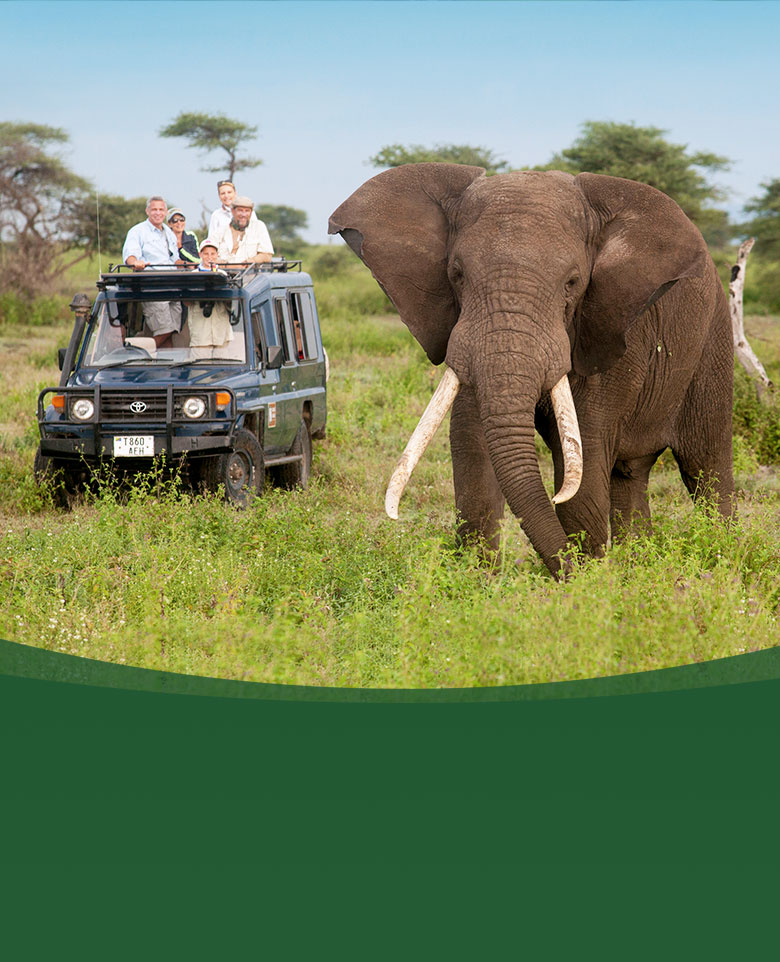
Come Travel with Us!
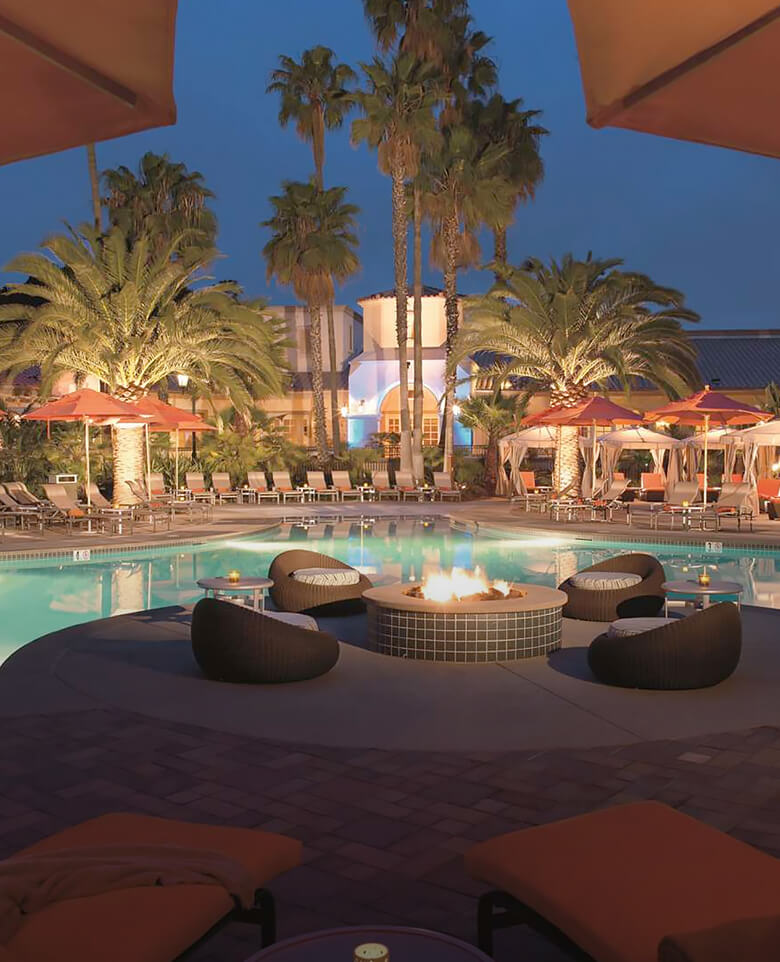
PREFERRED HOTELS

Picture Your Special Day at the Park!

IMAGES
COMMENTS
15500 San Pasqual Valley Road, Escondido, California 92027-7017. The Safari Park is the San Diego Zoo's sister park to the northeast in Escondido. Distance between the San Diego Zoo and the San Diego Zoo Safari Park is 35 miles. Please allow 45 minutes to 1 hour travel time. Get Directions .
Behind-the-Scenes Safari. Ages 3 & up. $92 & up per person. These Safaris are guaranteed to thrill and amaze! Your guide will escort you to a variety of locations around the Park to see animals up close and share stories of wildlife care and conservation. READ MORE.
Flightline Safari is the ultimate recreational experience for those looking for excitement. Secure and comfortable in your harness, you will soar as high as 130 feet above the ground with rhinos, giraffe, and more in the fields below you. The Flightline experience includes the use of safety equipment, an orientation, a brief interpretive tour ...
Discover the thrill of the Flightline Safari at the San Diego Zoo Safari Park. We'll take you on both ziplines as well as the special Deluxe upgraded Asian C...
2920 Zoo Drive, San Diego, CA 92101. The San Diego Zoo is the Safari Park's sister park to the southwest in San Diego. Distance between the San Diego Zoo and the San Diego Zoo Safari Park is 35 miles. Please allow 45 minutes to 1 hour travel time. Purchase a two-park pass here.
Best Value! Save up to $22. Includes: One visit to the San Diego Zoo and one visit to the San Diego Zoo Safari Park -or- Two visits to the San Diego Zoo -or- Two visits to the San Diego Zoo Safari Park. Two total visits by the same person on any and all days. 2-Visit Pass tickets valid on any day within one year from date of purchase.
And a moment can change a lifetime. Buy Tickets. Visit Website. Neighborhood: North Inland. 15500 San Pasqual Valley Rd. Escondido, CA 92027-9614. Get Directions. Contact Info. (619) 718-3000.
The 1-hour Wildlife Safari is the most popular tour at San Diego Safari Park followed by the 90-minute Twilight Wildlife Safari. You go inside the African animal enclosure in an open-air covered truck. Twilight tours add a light meal. Deluxe Safari is 90 minutes long and also tours the Asian enclosures.
There are two swimming pools for the San Diego Safari Park herd in this 5-and-a-half acre habitat. There are two main yards. One is usually open while the other is being cleaned of copious amounts of elephant dung and stocked with treats. In most cases, the Elephant Viewing Patio will be the best place to watch them.
Join us to celebrate World Gorilla Day and Wild Weekend: African Forest on September 21-22 at the San Diego Zoo. Rustle through the brush and explore how we're saving, protecting, and caring for fascinating wildlife throughout this forest landscape.
The Balloon Safari takes 8-10 minutes and costs $20 for guests. Children 11 and younger must be accompanied by an adult, and the safari availability is subject to weather conditions. For more information visit sdzsafaripark.org. Bringing species back from the brink of extinction is the goal of San Diego Zoo Global.
Use the San Diego Zoo Safari Park app to get the most out of your visit to the Safari Park! Follow one of the preset walking paths or find directions to your favorite animal. ... After your test flight you will travel in a Safari truck through areas of the conversation park where regular guest never see. Everyone is fun, kind, cautious, and ...
Home to more than 3,600 animals representing over 300 species, San Diego Zoo Safari Park lets you to get up close and personal with animals from around the world. Hop on the safari tram, observe animals in their natural habitats and get insights to the conservation work in the park.
The San Diego Zoo Safari Park is located at 15500 San Pasqual Valley Road, Escondido, CA 92027. Check-In: Wildlife Safaris Through September 30, 2024: 15 minutes prior to departure at the Wildlife Safari check-in booth, next to Park Base. Wildlife Safaris October 1, 2024 and Beyond: 15 minutes prior to departure at Safari Excursions.
The San Diego Zoo Safari Park is offering that opportunity. "Roar and Snore Safari" is a sleepover program that features camp activities, an after-hours look at wildlife, guided walks, s ...
World -- welcome the birth of a southern white rhino calf, born at the San Diego Zoo Safari Park's Nikita Rhino Rescue Center! The calf was born on Aug. 6, conceived through natural breeding and ...
The San Diego Zoo Safari Park is now home to the world's second successfully cloned Przewalski's horse, a critically endangered species previously considered extinct in the wild until 1996, it ...
Wings of the World Aviary - Everything in this free-flight aviary is designed to approximate the natural turf for over 140 birds of 40 species. ... The San Diego Zoo Safari Park is an adventurer's safari paradise in Southern California. The 1,800-acre park is home to more than 3,000 animals representing more than 375 species, many living in ...
Things to know before you go. The Safari Park and the San Diego Zoo are 32 miles (52 kilometers) apart, about a 45-minute drive between the two. Given San Diego's sunny clime, take a sunhat and sunscreen. Lockers and luggage storage are available. Several restaurants inside the park sell food, or you can bring your own; picnic areas are ...
San Diego Zoo Safari Park San Diego. Immersive Wildlife Experience. 1 / 5. Previous. Next. Overview. A wildlife park featuring expansive habitats and safari-style experiences. Suggested Duration - 4-6 hours. ... Once you have chosen your destination, the next step in planning a trip is to book flights. And learning how to find and book cheap ...
Explore the animals and gardens you will encounter on a visit to the Safari Park. ANIMALS ABDIM'S STORK. ... They have powerful legs and strong flight muscles to move their heavy body, and eyes on the side of their head to help detect predators. ... San Diego Zoo Wildlife Alliance is a 501(c)(3) organization. Visit. Membership; Plan Your Visit ...
San Diego Zoo Wildlife Alliance is an international, nonprofit conservation organization with two front doors. We integrate wildlife health and care, science, and education to develop sustainable conservation solutions. Conservation is at the heart of everything we do. And it starts with that connection we make with people and wildlife every ...
Tour Overview and Pricing. The San Diego Bay Private Harbor Tour offers guests a captivating one-hour excursion through the picturesque waters of San Diego Bay, priced at $375.00 per group (up to 6 participants).. This exclusive tour allows visitors to witness the stunning sights of the Coronado Bay Bridge, the iconic Star of India sailing ship, and the renowned USS Midway Aircraft Carrier Museum.
San Diego Zoo and Safari Park combined attendance for 2011 is nearly 5 million; total number of card-carrying members is 530,740. 2011; 2012. Condors Sisquoc and Shatash become the first pair to ever be observed by the public incubating an egg on a life web camera set up in their off-exhibit condor care area at the San Diego Zoo Safari Park. 1 ...
Step 1. Select a Creature Comfort Hotel - many offering FREE Breakfast and Parking! Step 2. Select your tickets and get ready for an adventure like no other! Step 3. Have fun and enjoy these exclusive savings in your San Diego Zoo Safari Park Bundled Experience. Please be sure to check operating hours prior to booking.
Best Value! Save up to $22. Includes: One visit to the San Diego Zoo and one visit to the San Diego Zoo Safari Park -or- Two visits to the San Diego Zoo -or- Two visits to the San Diego Zoo Safari Park. Two total visits by the same person on any and all days. 2-Visit Pass tickets valid on any day within one year from date of purchase.
The San Diego Zoo Safari Park is located at 15500 San Pasqual Valley Road, Escondido, CA 92027. Check-In: Elite Adventures Through September 30, 2024: 15 minutes prior to departure at Safari Check-in booth located next to Park Base. Elite Adventures October 1, 2024 and Beyond: 15 minutes prior to departure at Safari Excursions. Minimum Age:
Rachael Gunn, the Olympic breaker who went viral for her performance at the Paris Games last month, has apologized to the breaking community for the backlash she brought upon it.